- Affärsnyheter
- Alternativ hälsa
- Amerikansk fotboll
- Andlighet
- Animering och manga
- Astronomi
- Barn och familj
- Baseball
- Basket
- Berättelser för barn
- Böcker
- Brottning
- Buddhism
- Dagliga nyheter
- Dans och teater
- Design
- Djur
- Dokumentär
- Drama
- Efterprogram
- Entreprenörskap
- Fantasysporter
- Filmhistoria
- Filmintervjuer
- Filmrecensioner
- Filosofi
- Flyg
- Föräldraskap
- Fordon
- Fotboll
- Fritid
- Fysik
- Geovetenskap
- Golf
- Hälsa och motion
- Hantverk
- Hinduism
- Historia
- Hobbies
- Hockey
- Hus och trädgård
- Ideell
- Improvisering
- Investering
- Islam
- Judendom
- Karriär
- Kemi
- Komedi
- Komedifiktion
- Komediintervjuer
- Konst
- Kristendom
- Kurser
- Ledarskap
- Life Science
- Löpning
- Marknadsföring
- Mat
- Matematik
- Medicin
- Mental hälsa
- Mode och skönhet
- Motion
- Musik
- Musikhistoria
- Musikintervjuer
- Musikkommentarer
- Näringslära
- Näringsliv
- Natur
- Naturvetenskap
- Nyheter
- Nyhetskommentarer
- Personliga dagböcker
- Platser och resor
- Poddar
- Politik
- Relationer
- Religion
- Religion och spiritualitet
- Rugby
- Så gör man
- Sällskapsspel
- Samhälle och kultur
- Samhällsvetenskap
- Science fiction
- Sexualitet
- Simning
- Självhjälp
- Skönlitteratur
- Spel
- Sport
- Sportnyheter
- Språkkurs
- Stat och kommun
- Ståupp
- Tekniknyheter
- Teknologi
- Tennis
- TV och film
- TV-recensioner
- Underhållningsnyheter
- Utbildning
- Utbildning för barn
- Verkliga brott
- Vetenskap
- Vildmarken
- Visuell konst
Om podden
Sometimes it is not the obvious that makes a difference. And sometimes it is not the price that determines value. Sometimes it is just a drop that drives a wave. This podcast is about the difference, value or drop that open source can be. Each episode we talk with experts about open source related topics and why they do it the open source way.
The podcast The Open Source Way is created by SAP SE. The podcast and the artwork on this page are embedded on this page using the public podcast feed (RSS).
Avsnitt
Catena-X- Tractus-X
In this episode, Karsten Hohage and Siegfried Kiermayer, a cloud architect at SAP Commerce, discuss governance issues and solutions in open source projects.
The host Karsten Hohage, and guest Siegfried Kiermayer, cloud architect at SAP Commerce, talk about governance issues and solutions in open source projects, using projects like Catena-X and Tractus-X as an example. Starting with the basis of what these projects are, they will go into detail on how the projects are managed with time throughout the episode.
Guests:



Siegfried Kiermayer
For seven years running, Siegfried Kiermayer serves as a Cloud Architect at SAP, where he is currently responsible for the Build Environment of SAP Commerce. He held an integral, founding role with Catena-X for two years and Eclipse Foundation Tractus-X Project Lead.
LinkedIn: https://www.linkedin.com/in/siegfried-kiermayer-006199110
Show Notes:
- Catena-X: https://catena-x.net/
- Tractus-X: https://eclipse-tractusx.github.io/
- SAP Open Source Program Office
- Try out an open-source podcast player – find a list here (list not maintained by SAP)
- Additional Downloads
- Download the transcript as PDF file
Host:
Karsten Hohage – Product Expert in Technology and Innovation (T&I)

LinkedIn: https://www.linkedin.com/in/karsten-hohage-0180312/
The post Catena-X- Tractus-X first appeared on The Open Source Way.
Asset Administration Shell
In this episode Karsten Hohage and Thiago Weber Martins, the product manager for AAS Digital Twins at SAP, take a deep dive into the Asset Administration Shell.
The host Karsten Hohage converses with Thiago Weber Martins, the product manager for AAS Digital Twins at SAP, about the Asset Administration Shell (AAS). Thiago takes us on a journey about what the AAS is, what the standards are, and where AAS and digital twins are used. Together they also talk about the original idea and goals of digital twins and how these developed over time.
Guests:

Thiago Weber Martins
Thiago is a Product Manager for AAS Digital Twins at SAP. His mission is to further develop digital twins based on standards within business applications and processes to ensure interoperability in industrial ecosystems.
He is therefore involved in the Industrial Digital Twin Association (IDTA) to drive the Asset Administration Shell (AAS) as the standard for digital twins. Thiago is also a project lead for the Eclipse AAS Model for Java and member of the Project Management Committee of the Eclipse Digital Twin Top-Level Project.
He holds a PhD in mechanical engineering from TU Darmstadt, where he focused on AI approaches to automate product development processes.
LinkedIn: https://www.linkedin.com/in/dr-thiago-weber-martins/
Show Notes:
- SAP Open Source Program Office
- Try out an open-source podcast player – find a list here (list not maintained by SAP)
- Additional Downloads
Host:
Karsten Hohage – Product Expert in Technology and Innovation (T&I)

LinkedIn: https://www.linkedin.com/in/karsten-hohage-0180312/
The post Asset Administration Shell first appeared on The Open Source Way.
InnerSource Commons
A dive into the basics of InnerSource Commmons, the worlds largest community of InnerSource advocates.
In this episode, host Karsten Hohage speaks with Danese Cooper, Guilherme Dellagustin (SAP), and Russ Rutledge about InnerSource Commons. Founded in 2015, InnerSource Commons is the worlds largest community of InnerSource advocates. InnerSource Commons provides knowledge, best pratices, challenges, and solutions related to InnerSource for organizations and individuals.
Guests:

Danese Cooper
Danese Cooper is a well-known advocate for open source. She is also the founder of the InnerSource Commons Foundation. During her career in tech, she has focused on manifesting better software engineering outcomes by fostering healthy community practices and implementing transparent processes. She says that she abhors silos.
GitHub: https://github.com/danese
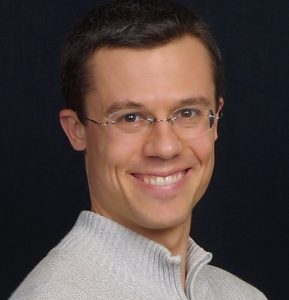
Russ Rutledge
Russ Rutledge is the Executive Director of the InnerSource Commons. He also serves as Senior Director of InnerSource and collaboration at WellSky, the health technology company leading the charge to make healthcare better for everyone. And Russ’s drive and passion is to enable all software engineers worldwide to achieve incredible results via streamlined collaborative InnerSource processes.
GitHub: https://github.com/rrrutledge
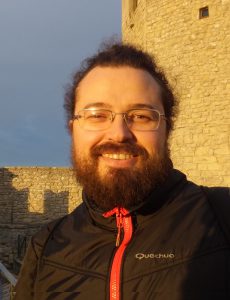
Guilherme Dellagustin
I am a software developer who acts as InnerSource Officer at SAP. I’m also a member of the InnerSource Commons foundation. As InnerSource officer, I co-lead the InnerSource program at SAP, helping spread the practice in the company, and as member of foundation, I do the same, but to spread the practice in the whole industry. I was also the producer of this very podcast in 2023. In my free time, I talk about retrogaming (in portuguese) at the podcast “Fliperama de Boteco”.
GitHub: https://github.com/dellagustin-sap
Show Notes:
- Download the transcript as PDF file
- InnerSource Commons: https://innersourcecommons.org/
- SAP Open Source Program Office
- Try out an open-source podcast player – find a list here (list not maintained by SAP)
Host:
Karsten Hohage – Product Expert in Technology and Innovation (T&I)

LinkedIn: https://www.linkedin.com/in/karsten-hohage-0180312/
The post InnerSource Commons first appeared on The Open Source Way.
SAP R3 Port to Linux
A little time jump into the past when Christoph Roland and Harald Kuck ported SAP software stack to Linux.
In this episode, host Karsten Hohage speaks with Christoph Roland (former SAP) and Harald Kuck (SAP) about the past – when they both ported SAP software stack to Linux back in the 90s. Today Linux provides an open-source-based operating system infrastructure for SAP solutions. In the podcast Christoph and Harald share anecdotes and insides from the very beginning of Open Source and SAP.
Guests:

Christoph Rohland
Chrstoph Rohland discovered Linux at university in early 1993 and was convinced that Linux it had a great future. He joined SAP in 1994 where he started in the support organization, but soon joined Harald’s development team. Christoph took care of SAP’s network library – and ported the SAP stack to Linux. He then founded the SAP LinuxLab. Later he took on several management roles. He left SAP in 2008 to pursue other opportunities.
GitHub: https://github.com/hcrohland
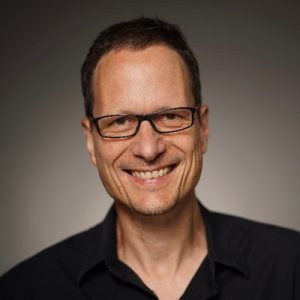
Harald Kuck
Harald Kuck led SAP’s ABAP Platform unit until March 2024 and is now retiring. He started his career at Siemens and Karlsruhe University, before joining SAP in 1989, where he was part of the team implementing the R/3 kernel in C. Since then, Harald has founded several SAP technology development teams, including the SAP JVM team in the Java space or the Steampunk team in the ABAP space. One of the highlights of his 38-year career was initiating SAP’s move to Linux and open source, together with Christoph, in 1999.
Show Notes:
- SAP Open Source Program Office
- Try out an open-source podcast player – find a list here (list not maintained by SAP)
- Additional Downloads
Host:
Karsten Hohage – Product Expert in Technology and Innovation (T&I)

LinkedIn: https://www.linkedin.com/in/karsten-hohage-0180312/
The post SAP R3 Port to Linux first appeared on The Open Source Way.
CAP Operator
What is CAP Operator, what are its main features, and how does it function?
In this episode, host Karsten Hohage speaks with Sathyajith Krishnan (SAP) and Pavan Nayak (SAP) about CAP Operator – which deploys and manages the lifecycle of multi-tenant SAP Cloud Application Programming Model applications and related components, based on SAP BTP golden path, within a Kubernetes cluster.
Sathyajith and Pavan explain the main features of CAP Operator and share an overview of the major automation steps handled by CAP Operator during the deployment of the application. The conversation also covers the operator’s evolution from an internal solution to an open-source resource, the foundational knowledge needed for users, and future enhancements planned for better integration and community engagement.
Guests:
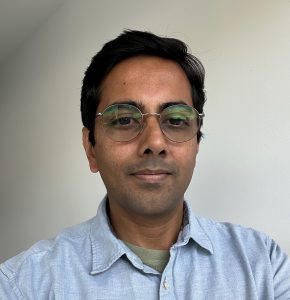
Sathyajith Krishnan is a Development Architect focused on building platform components which enable ease of consumption as well as access to the latest technologies for developers building business applications. For the past 16 years he has worked as part of product development teams as well as Customer specific implementation projects at SAP which has helped him gain unique perspectives on how to develop platform capabilities for both internal development teams as well as the external ecosystem.
GitHub: https://github.com/skrishnan-sap/
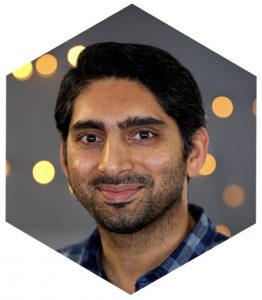
Pavan Nayak is an architect in the Cloud ERP area with 17 years of experience across different projects at SAP. Perhaps this may be of interest to Open Source Way listeners: Pavan was also part of UI5 within SAP and has interest in several Open Source projects in his private life outside SAP, most prominently the custom ROM scene with AOSP (esp. LineageOS).
GitHub: https://github.com/Pavan-SAP
Show Notes:
- Links
- SAP Cloud Application Programming Model (CAP): https://cap.cloud.sap
- CAP Operator GitHub: https://github.com/SAP/cap-operator
- CAP SAP Community page: https://pages.community.sap.com/topics/cloud-application-programming
- SAP Open Source Program Office
- Additional Downloads
Host:
Karsten Hohage – Product Expert in Technology and Innovation (T&I)

LinkedIn: https://www.linkedin.com/in/karsten-hohage-0180312/
The post CAP Operator first appeared on The Open Source Way.
Garden Linux
In this episode, host Karsten Hohage speaks with Florian Wilhelm (SAP) about Project Garden Linux – a lightweight, secure Linux distribution optimized for cloud-native environments and container workloads, offering minimal footprint and high performance. Florian also explains what the ‘new Linux’ is, why it’s needed and why the new Linux is of interest for open source, the community and for SAP.
Guest:
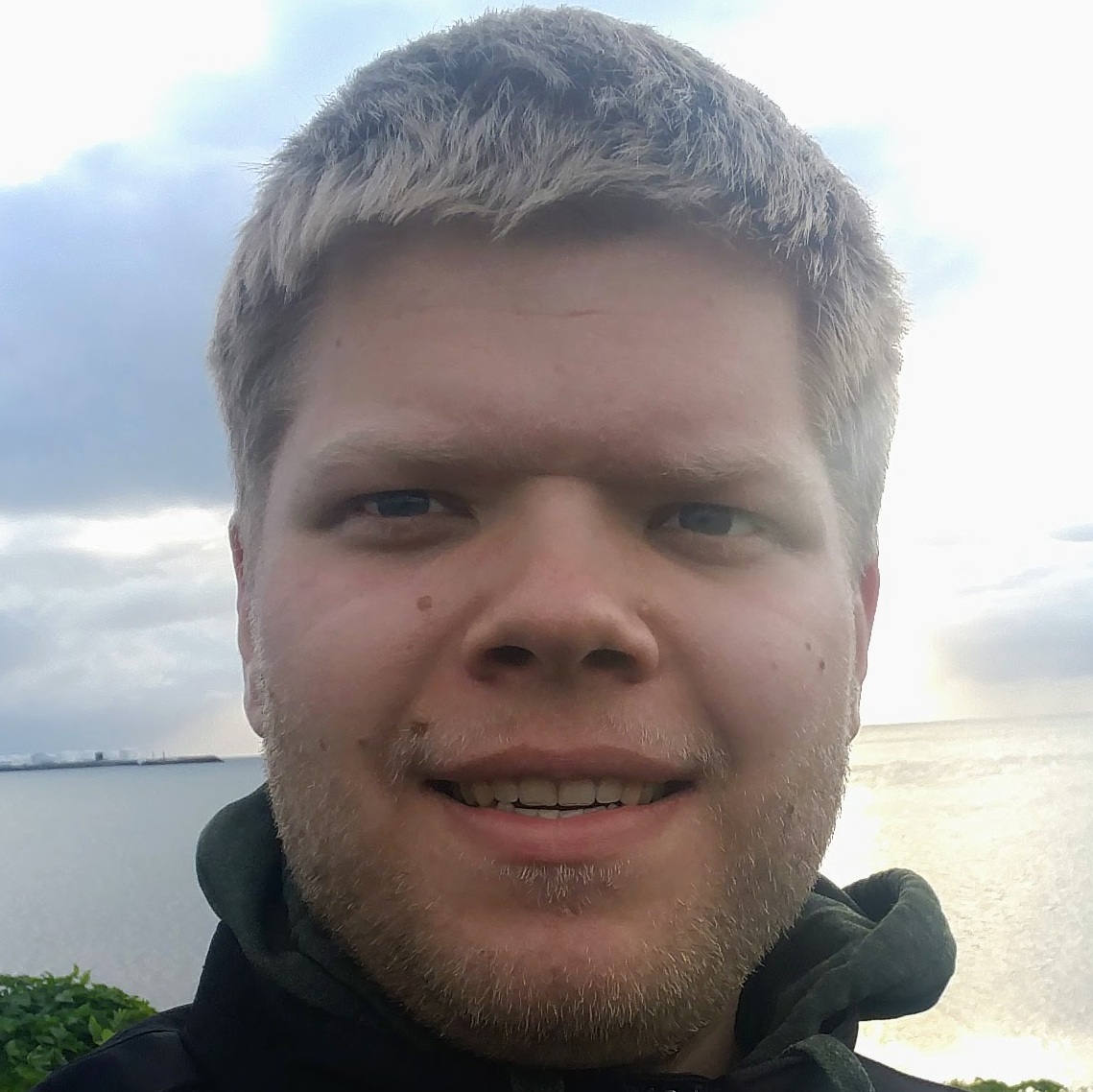
Florian Wilhelm
Florian is a senior software developer with a passion for Linux and Free Open-Source Software. He worked on Java-based projects before joining SAP in Potsdam in 2017 where he contributed to multiple projects, most notably the SAP Cloud SDK and Project ‘Piper’. He joined the project ‘Garden Linux’ team fulltime in 2024 after he got to know the team while doing a fellowship where he implemented a proof of concept for safe in-place upgrades using OSTree in Garden Linux.
- LinkedIn: https://www.linkedin.com/in/fwilhe/
- GitHub: https://github.com/fwilhe
Show Notes:
- Garden Linux on GitHub: https://github.com/gardenlinux
- Blog post series on OSTree Proof of Concept for Garden Linux: https://blogs.sap.com/2023/07/10/making-an-immutable-image-based-operating-system-out-of-garden-linux/
- Getting started with the Garden Linux Builder: https://github.com/gardenlinux/builder/blob/main/docs/getting_started.md
- Garden Linux docs for developers and admins: https://github.com/gardenlinux/gardenlinux/blob/main/docs/README.md
- Florian’s GitHub profile: https://github.com/fwilhe
- Florian’s LinkedIn profile: https://www.linkedin.com/in/fwilhe
- SAP Open Source Program Office
-
- e-mail – [email protected]
- Try out an open-source podcast player – find a list here (list not maintained by SAP)
Hosted by Karsten Hohage – Product Expert in Technology and Innovation (T&I)
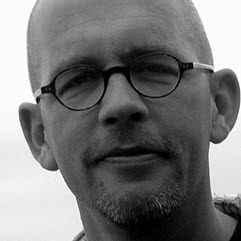
LinkedIn: https://www.linkedin.com/in/karsten-hohage-0180312/
The post Garden Linux first appeared on The Open Source Way.
Open Resource Discovery (ORD)
What is Open Resource Discovery (ORD) and how can it be used and implemented inside SAP and beyond?
In this episode, host Karsten Hohage speaks with Simon Heimler (SAP) about Open Resource Discovery (ORD) – a protocol that allows applications and services to self-describe their exposed resources and capabilities. Simon explains in more detail what ORD is, how it’s used and where at SAP we already use ORD or plan to use it in the future. As the platform is an open standard by SAP geared towards the SAP ecosystem, how do we ensure a correct adoption of ORD at SAP? And how can it be helpful for individuals outside of SAP?
Guest:

Simon Heimler
Simon Heimler is a Software Architect at SAP and works on metadata standardization & strategy, Data Products, APIs and Event guidelines and integration topics. Before that, he has done full-stack development & architecture in various companies. He maintains a few private open source projects where time permits.
- GitHub-Link: Fannon (Simon Heimler) · GitHub
- LinkedIn: https://www.linkedin.com/in/simonheimler/
Show Notes:
- Links
- SAP Open Source Program Office
- Try out an open source podcast player (list not maintained by SAP)
Hosted by Karsten Hohage – Product Expert in Technology and Innovation (T&I)

LinkedIn: https://www.linkedin.com/in/karsten-hohage-0180312/
The post Open Resource Discovery (ORD) first appeared on The Open Source Way.
abapGit
Introducing abapGit – an open source Git client. In this Podcast episode, we explain and discuss what abapGit is, how it works, what it’s needed for, and how it can be used.
In this episode, host Karsten Hohage speaks with Michael Schneider and Marc Bernard about abapGit – an open source Git client developed for the ABAP server to import and export objects between ABAP systems. In the discussion, Marc explains the basics of abapGit, and how it works. He also shares what abapGit is needed for, and how it can be used. Michael gives us some insights about SAP’s involvement in the development of abapGit and invites the listeners to explore more ABAP open source projects.
Guests:
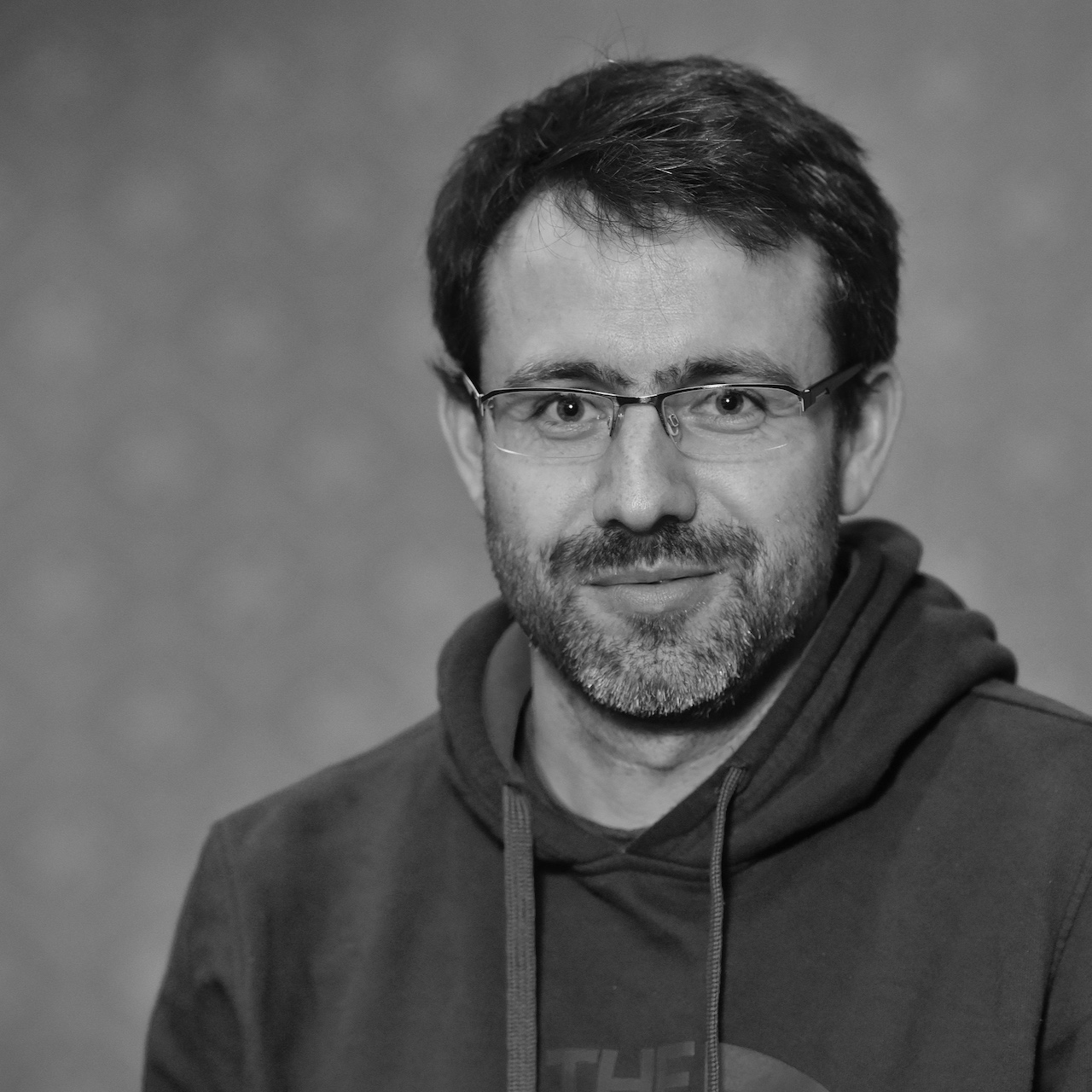
Michael Schneider
For over ten years, Michael has held the product owner role, handling various topics related to ABAP developer tools. Previously, he was a developer in the same field and was part of the pioneering team that built ABAP development tools in Eclipse. He is responsible for various tools in this area, including the ABAP class editor.
More recently, he and his team launched and are actively maintaining two open source repositories focusing on ABAP file formats.
- GitHub-Link: https://github.com/schneidermic0
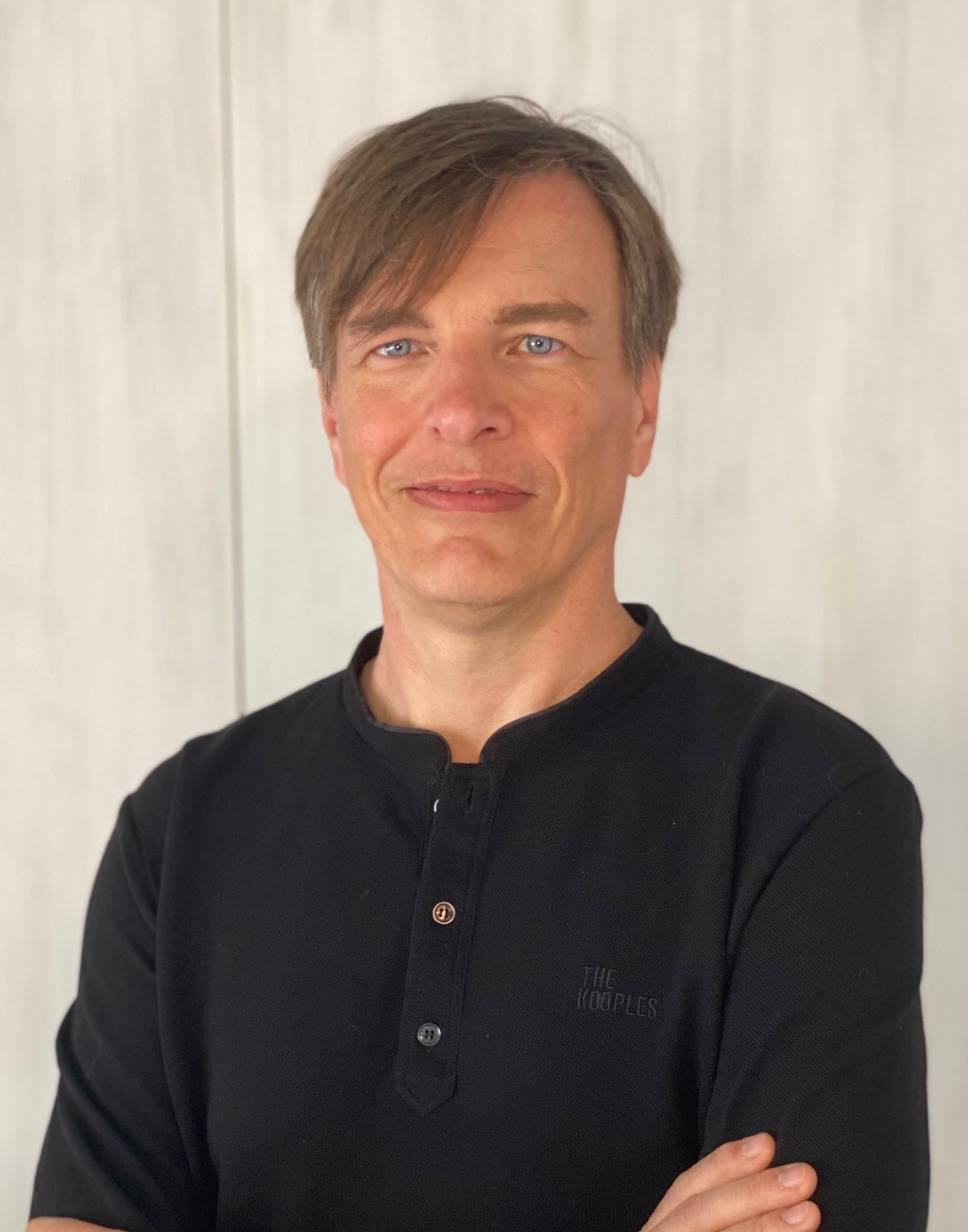
Marc Bernard
Marc Bernard is a distinguished technology architect with a rich history at SAP as a Sr. Chief Architect, specializing in in-memory computing and data warehousing. His strategic vision contributed significantly to SAP HANA and BW/4HANA’s success, earning him a reputation as a trusted advisor for SAP customers.
In 2019, Marc founded Marc Bernard Tools, focusing on pioneering ABAP open source tools. He’s a lead maintainer for abapGit and contributes to ABAP and JavaScript open source projects, demonstrating his unwavering commitment to the tech community. Marc is a recognized speaker at industry events and is set to present at ABAPConf in June 2024.
- Twitter: https://twitter.com/marcfbe
- LinkedIn: https://linkedin.com/in/marcfbe
- GitHub-Link: https://github.com/mbtools
Show Notes:
- Links
- SAP Open Source Program Office
- Try out an open source podcast player (list not maintained by SAP)
- Additional Downloads
Hosted by Karsten Hohage – Product Expert in Technology and Innovation (T&I)

LinkedIn: https://www.linkedin.com/in/karsten-hohage-0180312/
The post abapGit first appeared on The Open Source Way.
EU Cyber Resilience Act (CRA)
In this episode, host Karsten Hohage discusses the European Cyber Resilience Act (CRA) with Mirko Boehm, Mike Milinkovich, and Sebastian Wolf. Our guests explain what the Cyber Resilience Act (CRA) is and why it is important to virtually everyone in the EU and anyone who wants to do business in the European market. What has the journey of the CRA been until now, and what are the next steps in the evolution of CRA? How will the CRA impact the consumption and contribution of Open Source Software?
Guests:
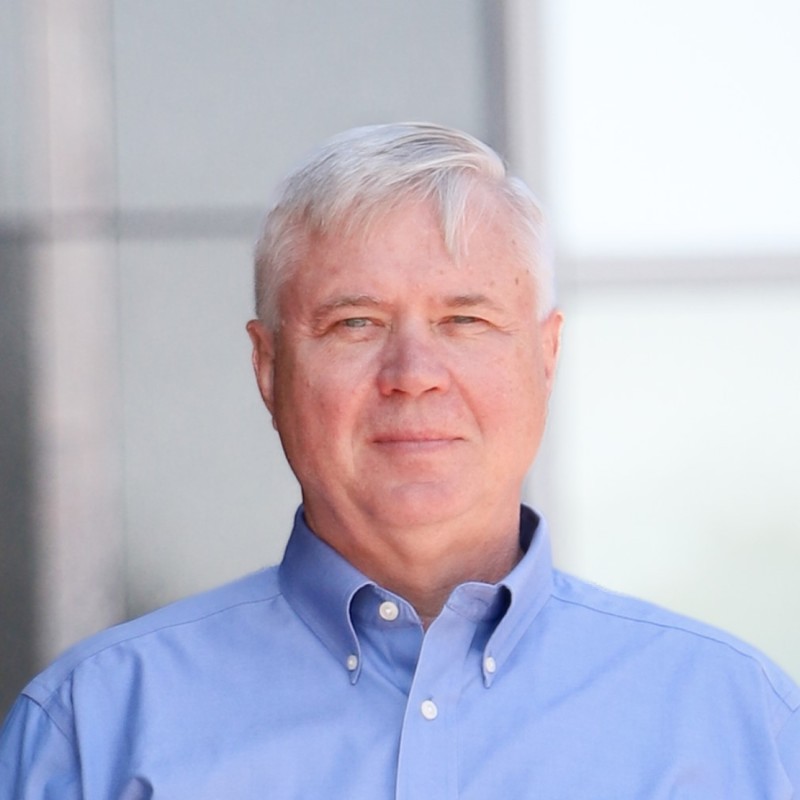
Mike Milinkovich
Mike Milinkovich is a seasoned technology executive with a wealth of experience in leading open source software organizations. For the past 20 years, Mike has served as the Executive Director of the Eclipse Foundation, where he has played a pivotal role in driving innovation and fostering industry collaboration within the Eclipse community. Mike has served on the boards of Open Source Initiative, the Java Community Process, and the OpenJDK community where he championed industry adoption of open-source technologies and standards.
- LinkedIn – https://www.linkedin.com/in/mikemilinkovich/
- Twitter / X – https://twitter.com/mmilinkov
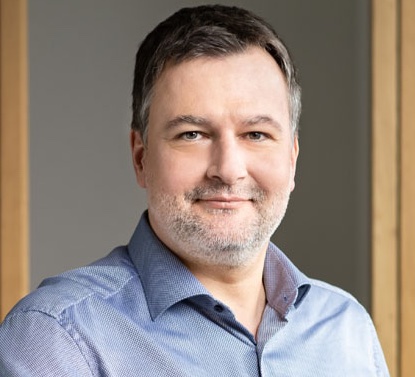
Mirko Bohm
Mirko Boehm is a prominent figure in the open-source software community, known for his expertise in software development, leadership, and advocacy. He is currently working as Senior Director, Community Development, Linux Foundation Europe. As a seasoned technologist and entrepreneur, he has held leadership roles in both technical and managerial capacities, demonstrating a unique blend of technical acumen and strategic thinking. Mirko is passionate about fostering collaboration and innovation within the open-source ecosystem, and he is actively involved in promoting the principles of openness, transparency, and community-driven development.
- LinkedIn – https://www.linkedin.com/in/mirkoboehm/
- Twitter / X – https://twitter.com/mirkoboehm
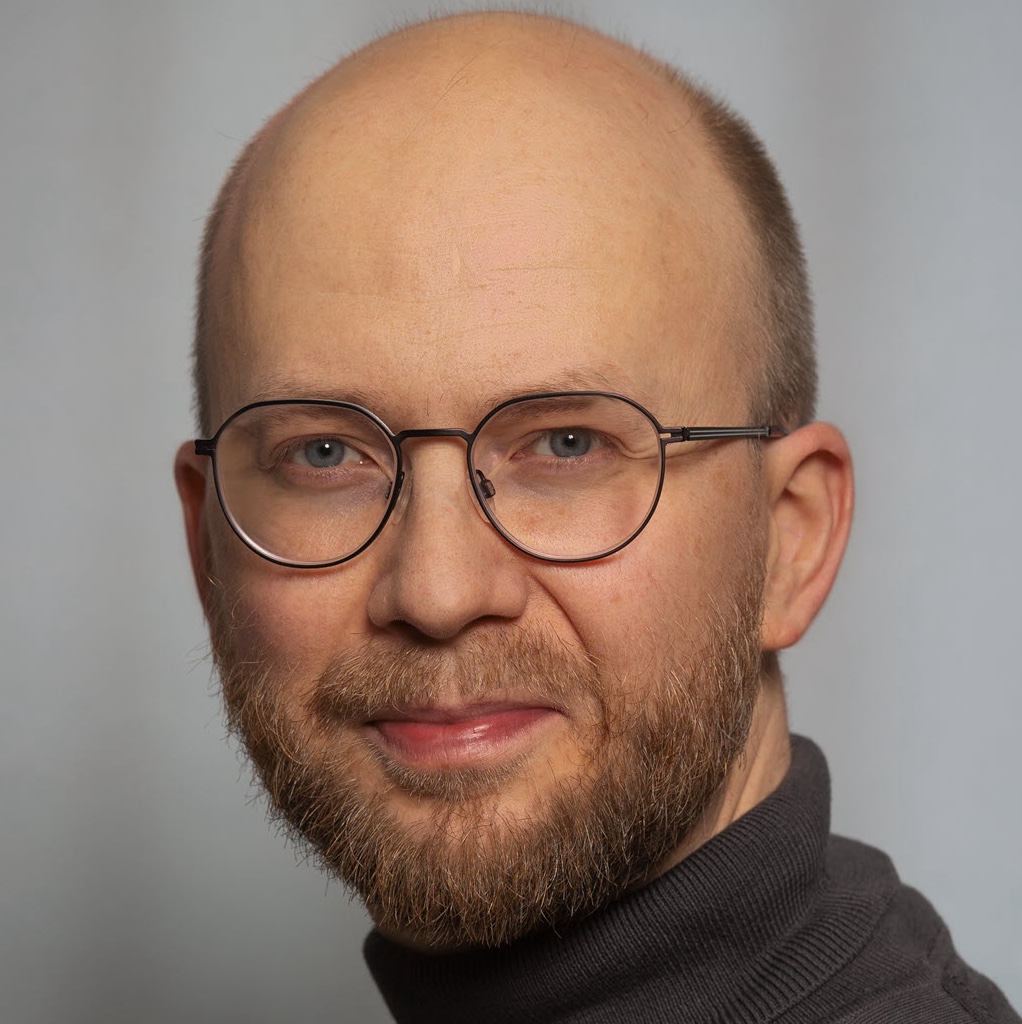
Sebastian Wolf
Sebastian is a development architect and has worked for the SAP OSPO since the beginning of 2020. He first joined SAP in 2003 as a student and has since worked in several development positions at, for example, SAP SRM, ABAP Development Tools, the SAP Community Network, and Central Architecture. He was engaged at the Corona-Warn-App project as a community manager from the very beginning and is now coordinating open-source consumption topics in the SAP OSPO.
- Twitter: https://twitter.com/Ygriega
- GitHub: https://github.com/Wunderfitz
Show Notes:
- Links
- FOSDEM 24 EU Legislative Landscape Devroom: https://fosdem.org/2024/schedule/track/eu-policy/
- SAP Open Source Program Office
- Try out an open-source podcast player – find a list here (list not maintained by SAP)
- Additional Downloads
Hosted by Karsten Hohage – Product Expert in Technology and Innovation (T&I)

LinkedIn: https://www.linkedin.com/in/karsten-hohage-0180312/
The post EU Cyber Resilience Act (CRA) first appeared on The Open Source Way.
Open Source and Universities
In this episode, host Karsten Hohage discusses open source and InnerSource at universities with our guest Clare Dillon. Clare explains how collaborative, community-driven approaches to open-source development at universities result in greater knowledge sharing, but also what the academia-specific challenges to open approaches are. This episode will help you gain insight into the evolving open source landscape in academia and how it differs from other parts of the OSS ecosystem.
Guest:
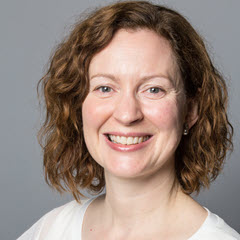
Clare Dillon
Clare Dillon is an open source and InnerSource advocate and is currently a researcher with University of Galway and Lero, the Science Foundation Ireland Research Centre for Software. Alongside working with the emerging global community of academic OSPOs, Clare is a member of Lero’s OSPO team. From 2021-2023, Clare served as the inaugural Executive Director of InnerSource Commons, a global non-profit foundation supporting open collaboration methods in corporate software development. In 2021, Clare co-founded Open Ireland Network, a community for those interested in advancing open source at a national level in Ireland. Previously, Clare was a member of the Microsoft Ireland Leadership Team, heading up their Developer Evangelism Group and responsible for Microsoft Ireland’s Academic Outreach Programs for over 10 years. Clare is a qualified coach and frequently speaks on topics relating to open collaboration and the future of work.
- LinkedIn: https://www.linkedin.com/in/claredillon/
Show Notes:
- Lero’s OSPO
- Sloan Foundation
- Science Foundation Ireland Research Centre for Software
- SustainOSS Academic Working Group
- CHAOSS
- SAP Open Source Program Office
- SAP Open Source at SAP Community
- Mastodon – @[email protected]
- Twitter – @sapopensource
- E-mail – [email protected]
- SAP University Alliances
- Try out an open-source podcast player – find a list here (list not maintained by SAP)
- Additional Downloads
Hosted by Karsten Hohage – Product Expert in Technology and Innovation (T&I)

LinkedIn: https://www.linkedin.com/in/karsten-hohage-0180312/
The post Open Source and Universities first appeared on The Open Source Way.
Sovereign Tech Fund – Investing in the Future Today
In this episode, our host Karsten Hohage talks to Powen Shiah and Mirko Swillus about the Sovereign Tech Fund. Established in 2022, it focuses on critical infrastructure in the public interest with the goal of supporting development, improvement, and maintenance of open-source components in digital infrastructure. The funding comes from the German Federal Ministry for Economic Affairs and Climate Action (Bundesministerium für Wirtschaft und Klimaschutz), as investing in digital commons strengthens innovation, economic competition, and democracy.
Guests:

Powen Shiah
Powen handles communications at the Sovereign Tech Fund. He’s worked in product marketing, communications, and internationalization at technology startups in Germany and the US and really enjoys thinking about how technologies impact our lives. His latest passion is a growing collection of (savory) popcorn seasonings.
- Twitter: https://twitter.com/polexa
- LinkedIn: https://www.linkedin.com/in/powenshiah/
- Mastodon: https://tech.lgbt/@polexa
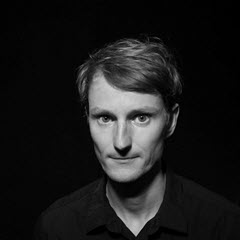
Mirko Swillus
Mirko has 15 years of professional experience in software engineering, working in different setups and roles. He’s specifically interested in the question of how engineering communities organize to achieve sustainable productivity. While Powen lives in Berlin, Mirko is based in Dresden.
- Mastodon: https://chaos.social/@mechko
- LinkedIn: https://www.linkedin.com/in/mirko-swillus-3a0714191/
Show Notes:
- Sovereign Tech Fund
- How to apply – https://www.sovereigntechfund.de/programs/applications
- Announcement – STF The Sovereign Tech Fund is becoming permanent and an independent organization – https://www.sovereigntechfund.de/news/stf-becomes-independent-permanent-organization
- Mastodon – https://mastodon.social/@sovtechfund
- LinkedIn – https://www.linkedin.com/company/sovereign-tech-fund/
- BlueSky – https://bsky.app/profile/sovereigntechfund.de
- Twitter/X – https://twitter.com/sovtechfund
- Open Source Contributor Index (OCI) – https://opensourceindex.io/
- Roads and Bridges: The Unseen Labor Behind Our Digital Infrastructure – Ford Foundation
- Mentioned episodes
- SAP Open Source Program Office
- Try out an open-source podcast player – find a list here (list not maintained by SAP)
- Additional Downloads
Hosted by Karsten Hohage – Product Expert in Technology and Innovation (T&I)

LinkedIn: https://www.linkedin.com/in/karsten-hohage-0180312/
The post Sovereign Tech Fund – Investing in the Future Today first appeared on The Open Source Way.
The Growing Importance of Software Bills of Materials (SBOM)
In this episode, our host Karsten Hohage talks to Max Mehl and Sebastian Wolf about Software Bills of Materials or SBOMs. An SBOM is a detailed record of all components within a software application, including open-source libraries, third-party dependencies and licenses. Max and Sebastian discuss the importance of SBOMs as well as some challenges and unanswered questions of the state of the art. They also speak with Karsten about SBOMs within SAP and Deutsche Bahn and the importance of SBOMs when it comes to open source.
Guests:
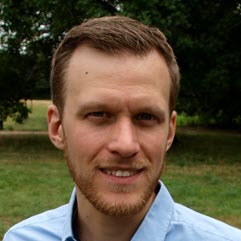
Max Mehl
Max has been committed to free and open-source software for many years. He is responsible for all aspects of open source at DB Systel. In this role, he supports Deutsche Bahn in using and contributing to open source professionally. He previously worked for the Free Software Foundation Europe (FSFE), where he coordinated initiatives such as REUSE and “Public Money? Public Code!”. He is a board member of FSFE and F-Droid and is involved in several projects as a maintainer.
- GitHub: https://github.com/mxmehl
- Mastodon: https://mastodon.social/@mxmehl
- LinkedIn: https://www.linkedin.com/in/mxmehl/
- Twitter: https://twitter.com/mxmehl
- Blog: https://mehl.mx/blog/
- Website: https://mehl.mx/
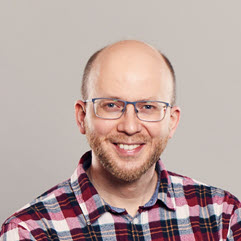
Sebastian Wolf
Sebastian is a development architect and has worked for the SAP OSPO since the beginning of 2020. He first joined SAP in 2003 as a student and has since worked in several development positions at, for example, SAP SRM, ABAP Development Tools, the SAP Community Network, and Central Architecture. He was engaged at the Corona-Warn-App project as a community manager from the very beginning and is now coordinating open-source consumption topics in the SAP OSPO.
- Twitter: https://twitter.com/Ygriega
- GitHub: https://github.com/Wunderfitz
Show Notes:
- Slides: SBOMs – A short introduction · todogroup/ospology · Discussion #376 (github.com)
- Software Bill of Deliveries (SBOD)
- SBOM Everywhere
- OSS Review Toolkit – https://github.com/oss-review-toolkit/ort
- SPDX – https://spdx.dev/
- CycloneDX – https://cyclonedx.org/
- Deutsche Bahn Open Source: https://opensource.deutschebahn.com
- SAP Open Source Program Office
- Additional Downloads
Hosted by Karsten Hohage – Product Expert in Technology and Innovation (T&I)

LinkedIn: https://www.linkedin.com/in/karsten-hohage-0180312/
The post The Growing Importance of Software Bills of Materials (SBOM) first appeared on The Open Source Way.
Project “Foxhound” – Hunting Cross-Site Scripting on the Web
In this episode, our host Karsten Hohage talks to Thomas Barber about project “Foxhound”, an SAP-maintained fork of Firefox (the web browser) that is designed to detect security vulnerabilities in websites. Thomas discusses the history of “Foxhound”, how and why it was created, and its journey to becoming an open-source project. He talks about the importance of the collaborations that made Foxhound successful and about some of the challenges that it has faced along the way. Anyone who wants to get involved in this project is welcome to visit the GitHub page to learn more.
Guest:
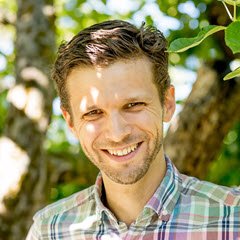
Thomas Barber
Thomas’ first experience with software development was at the age of twelve when he programmed the game “Mortal Wombat” in QuickBASIC. Since then, he has worked as an embedded software developer and security expert in the automotive industry, before moving to SAP Security Research in 2019. Thomas’ interests include investigating novel techniques for the detection and automatic prevention of injection vulnerabilities and privacy violations in web applications. Thomas holds a PhD in the field of Physics from the University of Cambridge and has published papers in the fields of Particle Physics, Astronomy, and Computer Science.
- GitHub: https://github.com/tmbrbr
- LinkedIn: https://www.linkedin.com/in/thomas-barber-b3965551/
Show Notes:
- SAP Open Source Program Office
- Project Foxhound – https://github.com/SAP/project-foxhound
- SAP Security Research – https://www.sap.com/about/company/innovation/icn.html#research
- Additional Downloads
Hosted by Karsten Hohage – Product Expert in Technology and Innovation (T&I)

LinkedIn: https://www.linkedin.com/in/karsten-hohage-0180312/
The post Project “Foxhound” – Hunting Cross-Site Scripting on the Web first appeared on The Open Source Way.
The TODO Group – Talk Openly, Develop Openly
In this episode our host Karsten Hohage talks to Ana Jiménez Santamaria about the TODO Group, a community dedicated to sharing knowledge, collaborating on practices, tools, and other ways to run effective Open Source Program Offices and similar initiatives. They discuss its history, mission, working mode, and how TODO Group provides a platform to connect peers and enables them to collaborate on projects that promote the integration of strategic open-source practices within different organizations. Everyone is welcome to join the TODO mission and contribute to the continuous development of best practices.
Guests:
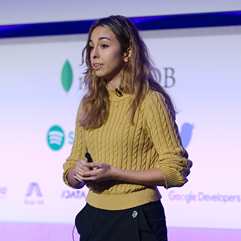
Ana Jiménez Santamaría is the OSPO Program Manager at the TODO Group. Ana has a strong background in Open Source, Developer Relations, Community Health Analytics, and InnerSource. She previously worked at Bitergia, a software development analytics firm, where she completed her M.Sc. in Data Science. Her thesis focused on measuring the success of Developer Relations in Open Source communities. For more details on her thesis work, check out: https://anajimenezsantamaria.gitlab.io/
- GitHub: https://github.com/anajsana
- LinkedIn: https://www.linkedin.com/in/ana-jiménez-santamaría/
- Mastodon: https://fosstodon.org/@anajsana
- Twitter: https://twitter.com/anajsana95
Show Notes:
- Links
- TODO Website: https://todogroup.org/
- Open Source Program Office definition: https://ospoglossary.todogroup.org/ospo-definition/
- Get Started Resources: https://todogroup.org/community/get-started/
- General Member & Steering Committee Charter: https://todogroup.org/about/charter/
- Support TODO as a General Member: https://todogroup.org/join/
- Support TODO as OSPO Associate: https://todogroup.org/about/associates/
- TODO Ambassador Program: https://todogroup.org/community/ambassadors/
- TODO Website: https://todogroup.org/
- SAP Open Source Program Office
- Additional Downloads:
Hosted by Karsten Hohage – Product Expert in Technology and Innovation (T&I)

LinkedIn: https://www.linkedin.com/in/karsten-hohage-0180312/
The post The TODO Group – Talk Openly, Develop Openly first appeared on The Open Source Way.
Open Component Model (OCM) – Describe, Transport, Deploy
OCM is an extensible standard accompanied by a toolset designed to enable the automation of many software-lifecycle-related processes. It can be defined as a common machine-readable format for describing software components, which serves as a Software Bill of Delivery (SBoD). In this episode, our guests Jason Kafka and Ingo Kober discuss with host Karsten Hohage about OCM and why it is run as open source. Jason and Ingo also talk about their vision for OCM’s future, its applications, and its challenges.
Guests:
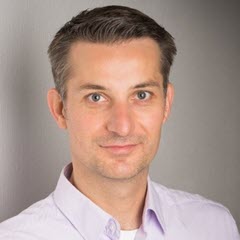
Jason Kafka has been part of the SAP family for 14 years. He started as a Software Engineer in the development support area, debugging hard core C/C++ SAP NetWeaver kernel bugs, and then went into technical project management. After that, he spent 1.5 years in Shanghai to help set up the SAP Cloud Platform. He then joined the Gardener organization, where he is now an engineering manager responsible for the Gardener Lifecycle Management team.
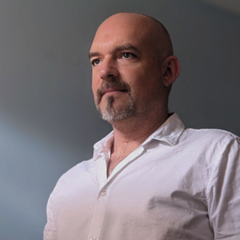
Ingo Kober joined SAP 22 years ago and has since worked in various positions, including development (Web / Java / ABAP), and scrum master. He is now a product owner for the internal service Landscaper, used to orchestrate Kubernetes deployments. In his current position, he mostly works with teams in the software lifecycle management area, trying to streamline processes and tools across SAP, with the goal to “improve SAP developers’ lives.” His current technology focus is on Kubernetes.
- LinkedIn: https://www.linkedin.com/in/ingo-kober-0a9875283/
- GitHub: https://github.com/In-Ko
- SAP People: https://people.sap.com/ingo.kober
Show Notes:
SGS = SAP Global Security team
- Links
- https://ocm.software/
- OCM – Breaking Boundaries with Open-Source Collaboration
- https://www.weave.works/
- https://gardener.cloud/
- SPDX ® – Software Package Data Exchange® – https://spdx.dev/
- https://cyclonedx.org/
- SAP Open Source Program Office
- Additional Downloads:
Hosted by Karsten Hohage – Product Expert in Technology and Innovation (T&I)

LinkedIn: https://www.linkedin.com/in/karsten-hohage-0180312/
The post Open Component Model (OCM) – Describe, Transport, Deploy first appeared on The Open Source Way.
Summer Break 2023 - We'll be back in August!
Dear listener, we typically have a summer break in August, but this year we will do it in July.
We will be back with an episode for you at the last Wednesday of August.
If you are craving for open source content from us, check out the recordings of our public webinars at https://webinars.sap.com/ospo-webinar-series/en/webinar-replays!
The post Summer Break 2023 – We’ll be back in August! first appeared on The Open Source Way.
Credential Digger – detecting leaked secrets on GitHub
Credential Digger is an SAP Open-Source code scanner for detecting hardcoded secrets. In this episode, Slim Trabelsi discusses with host Karsten Hohage what led to the creation of Credential Digger and about its key differentiators. Slim also speaks of the early challenges of scanning for secrets, and lists the many advantages of using open source for building and maintaining Credential Digger. Open source comes with visibility for customers, and contributors can work on a project even before they join the team or after they leave, leading to improved continuity and a better tool overall.
Guests:
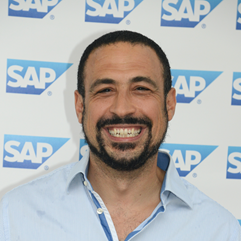
Slim Trabelsi joined SAP 15 years ago and currently works as a senior security expert in the SAP Security Research team. His background includes data privacy, data protection, and social media security. He is currently focusing his research activities on cyber security, threat intelligence, and surveillance. Slim recently developed an open-source tool called Credential Digger, which is used to identify hardcoded secrets in source code repositories like GitHub.
- Twitter: https://twitter.com/slim_security
- LinkedIn: https://www.linkedin.com/in/slim-trabelsi-94534a83/
- GitHub: https://github.com/SlimTrabelsi
- SAP People: https://people.sap.com/slim.trabelsi
Show Notes:
- Links
- https://github.com/SAP/credential-digger
- https://github.com/SAP/vs-code-extension-for-project-credential-digger
- Credential Digger: Using Machine Learning to Identify Hardcoded Credentials in Github – blog post
- SAP Security Research
- https://huggingface.co/SAPOSS/password-model
- NIST – Source Code Security Analyzers
- SAP Open Source Program Office
- Additional Downloads:
Hosted by Karsten Hohage – Product Expert in Technology and Innovation (T&I)

LinkedIn: https://www.linkedin.com/in/karsten-hohage-0180312/
The post Credential Digger – detecting leaked secrets on GitHub first appeared on The Open Source Way.
Do Good and Talk about it!
In this episode, our host Karsten Hohage talks with Johannes Bechberger, who is an open-source developer at SAP. They discuss why and how Johannes promotes his work on SapMachine, OpenJDK, and profiling through blogging, speaking at conferences, and having a presence on social media. Johannes also shares tips and learnings collected on his journey of “doing good and talking about it”.
Guests:
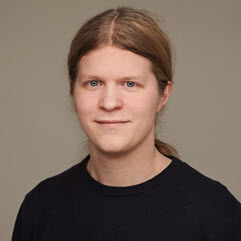
Johannes Bechberger currently works as a JVM developer in the SapMachine team at SAP. His responsibilities include making improvements to async-profiler and its ecosystem, as well as improving the FirefoxProfiler, which enables it to be usable in the Java world. In addition to his many contributions to open source, he also runs a successful blog, where he regularly writes about in-depth profiling and debugging.
Twitter: https://twitter.com/parttimen3rd
Blog: https://mostlynerdless.de
LinkedIn: https://linkedin.com/in/johannes-bechberger-381296149
GitHub: https://github.com/parttimenerd
Mastodon: https://mastodon.social/@parttimenerd
SAP People: https://people.sap.com/parttimenerd
Show Notes:
- Links
- SapMachine: https://sapmachine.io https://github.com/SAP/SapMachine
- Async Profiler: https://github.com/async-profiler/async-profiler
- Firefox Profiler based IntelliJ plugin: https://github.com/parttimenerd/intellij-profiler-plugin
- Sweet SapMachine on Twitter: https://twitter.com/SweetSapMachine
- The Open Source Way – Compiler History: https://podcast.opensap.info/open-source-way/2021/10/27/compiler-history-the-open-source-in-your-favorite-1990s-first-person-shooter/
- The Open Source Way – SapMachine and OpenJDK: https://podcast.opensap.info/open-source-way/2021/12/29/sapmachine-the-openjdk-for-all-things-sap/
- Foojay Podcast #14: Debugging Tools and Skills for Fun and Profit: https://foojay.io/today/foojay-podcast-14/
- SAP Open Source Program Office
- Additional Downloads:
Hosted by Karsten Hohage – Product Expert in Technology and Innovation (T&I)

LinkedIn: https://www.linkedin.com/in/karsten-hohage-0180312/
The post Do Good and Talk about it! first appeared on The Open Source Way.
Debunking InnerSource Myths
In this episode, our host Karsten Hohage talks with our guests Georg Gruetter from Robert Bosch and Michael Picht from SAP about common concerns regarding InnerSource. They debunk some of the frequent myths surrounding InnerSource and explain the many benefits of its utilization, including its versatility and its innovative and collaborative nature. In the course of the conversation, they also discuss how InnerSource code can be maintained successfully and what can be done for quality control.
Guests:
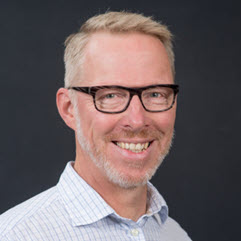
Georg Grütter is a passionate software developer and chief expert for InnerSource at Robert Bosch in Germany, where he co-founded the InnerSource initiative in 2009. Georg also co-founded the InnerSource Commons Foundation, for which he serves on the board of directors. Before Georg joined Bosch in 2004, he worked as a software developer and consultant for Line Information GmbH, Zurich System House and Mercedes-Benz AG.
LinkedIn: https://www.linkedin.com/in/georggruetter/
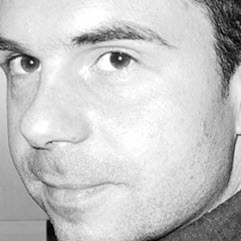
Michael Picht works as a chief architect at the SAP Open Source Program Office. He is one of the leads of SAP’s InnerSource program. Prior to this, he worked as a developer, software architect, project-, program- and product manager within SAP application development with focus on supply chain management, business processes, and innovation topics.
LinkedIn: https://de.linkedin.com/in/michael-picht-249b7a149
Show Notes:
- Links
- https://www.youtube.com/@sapdevs
- https://groups.community.sap.com/t5/sap-codejam/eb-p/codejam-events
- https://innersourcecommons.org
- https://www.oreilly.com/library/view/adopting-innersource/9781492041863/
- http://georg-gruetter.de/seven-years-of-innersource-at-bosch.mp4
- https://podcast.opensap.info/open-source-way/2020/11/11/innersource-rocks/
- https://blogs.sap.com/2021/10/06/establishing-innersource-at-sap/
- InnerSource is a marathon, not a sprint – the SAP Journey – IS Summit 22
- SAP Open Source Program Office
- Additional Downloads:
Hosted by Karsten Hohage – Product Expert in Technology and Innovation (T&I)

LinkedIn: https://www.linkedin.com/in/karsten-hohage-0180312/
The post Debunking InnerSource Myths first appeared on The Open Source Way.
SUSE – Delivering automation and enterprise grade Open Source software to the SAP ecosystem
In this episode, our host Karsten Hohage talks with our guests Alan Clarke and Keith Seigel about SUSE Enterprise Linux and and Linux in general. The speakers discuss how the SUSE distribution relates to Linux as an open source project and and talk about the development of new projects like Trento. They also mention the certification process, the subscription for patches and updates, discuss an example of fixing a HANA on SUSE issue, and explain the importance of the long-standing partnership with SAP for SUSE’s business.
Guests:
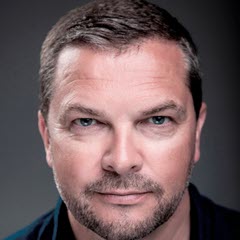
Alan Clarke is SAP Alliance Manager for the EMEA region at SUSE and has spent 8 of his 10 years there, embedded within the SAP ecosystem. Alan spends much of his time collaborating with and supporting both SAP partners (Hyperscalers, IHVs, GSIs and regional SIs and MSPs) and also assists SAP customers with their migration and transformation projects.
Twitter: https://twitter.com/alanclarke_SUSE
LinkedIn: https://www.linkedin.com/in/alanclarke7
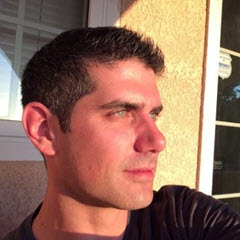
Keith Seigel came to SUSE in December of 2020 after a 10 year career within the SAP Ecosystem. At SAP he was an Account Executive who then moved through the leadership rankings within the Sales Development organization. Shortly after leading the Sales Development teams at SAP, he moved into a leadership role for various different solutions and services at SAP. Keith now oversees SUSE’s partnership with SAP for North America.
LinkedIn: https://www.linkedin.com/in/keith-s-626a7b8
Show Notes:
- Links
- SAP Open Source Program Office
- Additional Downloads:
Hosted by Karsten Hohage – Product Expert in Technology and Innovation (T&I)

LinkedIn: https://www.linkedin.com/in/karsten-hohage-0180312/
The post SUSE – Delivering automation and enterprise grade Open Source software to the SAP ecosystem first appeared on The Open Source Way.
SAP Cloud Application Programming Model (CAP) – A step-by-step journey towards open source
In this episode, our host Karsten Hohage talks with our guests Christian Georgi and Daniel Hutzel about the SAP Cloud Application Programming Model (CAP), a Software Development Kit (SDK) to build applications in the enterprise world. They speak about how CAP is gradually being open-sourced so that it can evolve with the help of its community. This will allow, for instance, the support of additional databases, consumption protocols, and UI frameworks. We also learn how the CAP team has engaged with the community so far and how this motivated them to open source it.
Guests:
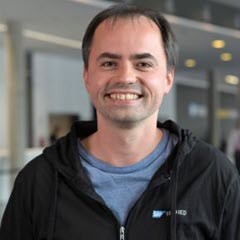
Christian Georgi has been working on development tools at SAP for many years, like the SAP HANA Studio and ABAP Development Tools (ADT) for Eclipse. He is now a product owner for CAP tools and helps spread the word about CAP.
LinkedIn: https://www.linkedin.com/in/christian-georgi-291258115
Daniel Hutzel has been with SAP since 2004. He invented and designed Core Data Services (CDS) in 2012, which got broadly adopted across SAP (in HANA, ABAP, and CAP), as well as Cloud Application Programming Model (CAP) in 2017, which he has been leading since then as Chief Architect and CPO.
LinkedIn: https://www.linkedin.com/in/aragon
Show Notes:
- SAP Open Source Program Office
- Additional Downloads:
Hosted by Karsten Hohage – Product Expert in Technology and Innovation (T&I)

LinkedIn: https://www.linkedin.com/in/karsten-hohage-0180312/
The post SAP Cloud Application Programming Model (CAP) – A step-by-step journey towards open source first appeared on The Open Source Way.
Project Piper – From InnerSource to Open Source
In this episode, our host Karsten Hohage talks with our guest Christoph Szymanski about Project Piper, an open source library for the creation of continuous integration and delivery pipelines. Christoph speaks about how Project Piper relates to the SAP-proprietary service “SAP Continuous Integration and Delivery“ and how Piper became a successful offering to anybody working with SAP development projects. We also learn why Christoph loves the unpopular task of writing tests and how these are the key factor to continuous delivery and integration.
Guest:
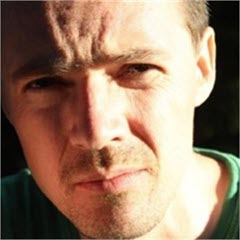
Christoph Szymanski is the owner of the SAP Continuous Integration and Delivery service and also works on Project Piper, which is the library behind the service, developed as a community project. Both enable you to build and automatize software delivery pipelines. Christoph has been an application developer for 20 years, mainly focusing on web applications in different languages and frameworks. During his career, he engaged in various roles, as for example Product Owner, Scrum Master, and Product Manager.
LinkedIn: https://www.linkedin.com/in/christoph-szymanski-9b0484103/
Twitter: https://twitter.com/ski_at_work
Show Notes:
- Links
- Project Piper: https://www.project-piper.io
- Continuous Integration and Delivery: https://help.sap.com/docs/CONTINUOUS_DELIVERY?locale=en-US
- SAP Open Source Program Office
- Additional Downloads:
Hosted by Karsten Hohage – Product Expert in Technology and Innovation (T&I)

LinkedIn: https://www.linkedin.com/in/karsten-hohage-0180312/
The post Project Piper – From InnerSource to Open Source first appeared on The Open Source Way.
Red Hat – Distributor and Mediator in the Open-Source World
In this episode, our host Karsten Hohage talks with our guest Arne Arnold from Red Hat about Linux and the role of distributors in the open-source world. Arne speaks about his journey from SAP to Red Hat and how the distributor made its way to become a catalyst for open-source communities. We also learn how Arne started his Linux career contributing to the search for extraterrestrial life from his student dormitory and about SAP’s contribution to Linux becoming the leading server operating system worldwide.
Guest:
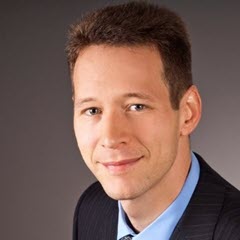
Arne Arnold is a Senior Principal Product Manager within the Red Hat Enterprise Linux Business Unit. As the offering manager for Red Hat’s solutions targeting SAP, his focus lies on SAP certifications and product roadmap for RHEL for SAP Solutions, the RHEL High Availability solutions for SAP, and SAP automation on top of the Red Hat Ansible Automation Platform.
Arne holds a Master‘s degree in Computer Science and is a certified PMI Project Manager Professional. Prior to joining Red Hat in 2018, Arne worked for VMware and SAP and was one of the first Product Managers for the SAP HANA platform.
LinkedIn: https://www.linkedin.com/in/arne-arnold/
Twitter: https://twitter.com/vArneArnold
Show Notes:
- Red Hat online trainings with SAP
- Red Hat customer trainings
- SAP Open Source Program Office
- Additional Downloads:
Hosted by Karsten Hohage – Product Expert in Technology and Innovation (T&I)

LinkedIn: https://www.linkedin.com/in/karsten-hohage-0180312/
The post Red Hat – Distributor and Mediator in the Open-Source World first appeared on The Open Source Way.
Linux Foundation – Building Trust in Software Supply Chains
In this episode, our host Karsten Hohage talks with our guest Shane Coughlan about OpenChain by the Linux Foundation and some other projects that build trust in the supply chain. Shane gives an overview of developments around open source and intellectual property over the last 20 years. We also learn about why OpenChain can be compared to shipping containers, and how organizations like the NSA have embraced Linux for secure US government operations.
Guest:
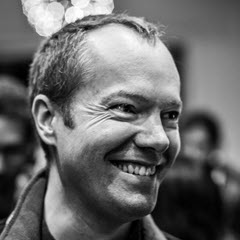
Shane Coughlan is a GM @linuxfoundation, advisor to the @worldmobilegroup, Assembly Member of @OpenForumEurope. He is an expert in communication, security, and business development. His professional accomplishments include
- building the largest open source governance community in the world through the OpenChain Project
- spearheading the licensing team that made Open Invention Network (OIN) the largest patent non-aggression community in history
- establishing the first global network for open source legal experts.
Shane is a founder of both the first law journal and the first law book dedicated to open source. Currently – among other things – he leads the OpenChain Project.
- Twitter: https://twitter.com/opendawn
- LinkedIn: https://www.linkedin.com/in/shanecoughlan/
Show Notes:
- Links
- SAP Open Source Program Office
- Additional Downloads:
Hosted by Karsten Hohage – Product Expert in Technology and Innovation (T&I)

LinkedIn: https://www.linkedin.com/in/karsten-hohage-0180312/
The post Linux Foundation – Building Trust in Software Supply Chains first appeared on The Open Source Way.
Cloud Foundry – A One-Size-Fits-All Solution for Application Development
In this episode, our host Karsten Hohage talks with our guests Ruben Koster and Beyhan Veli about Cloud Foundry, a platform-as-a-service offering for application developers. Ruben and Beyhan talk about their personal journey with Cloud Foundry, how it works, and how it relates to VMware, Pivotal, and SAP. We also learn about their run for Cloud Foundry’s Technical Oversight Committee and their future vision for the platform.
Guests:
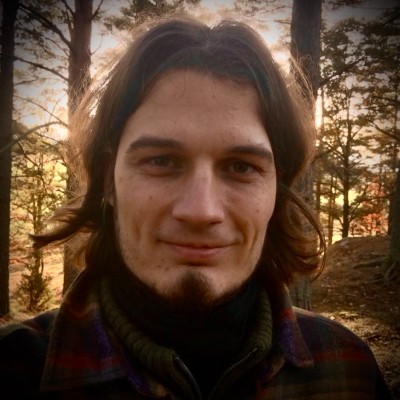
Ruben Koster has been a Cloud Foundry and BOSH consultant for 8 years before he joined VMware in the spring of 2021. He comes from the Netherlands, works in Sweden, and is also an aspiring member of the TOC.
- Twitter: https://www.linkedin.com/in/rukoster/
- LinkedIn: https://github.com/rkoster/

Beyhan Veli has been active in the CF community for over seven years. He started to contribute as a member of the BOSH team at SAP.A year ago, he took on a broader role at SAP and now also looks into other areas of CF and general topics from a Cloud Foundry application developer perspective. In the CF Community, Beyhan is the technical lead in the Foundational Infrastructure working group and an aspiring member of the TOC.
- Twitter: https://de.linkedin.com/in/beyhan-veli-791a093
- Github: https://github.com/beyhan
- LinkedIn: https://twitter.com/beyhan
Show Notes:
- 12 factor principles info
- cloudfoundry.org
- bosh.io
- TOC Slack channel
- Cloud Foundry Organization on GitHub
- SAP Open Source Program Office
Additional Downloads:
Download transcript as PDF file
Hosted by Karsten Hohage – Product Expert in Technology and Innovation (T&I)

LinkedIn: https://www.linkedin.com/in/karsten-hohage-0180312/
The post Cloud Foundry – A One-Size-Fits-All Solution for Application Development first appeared on The Open Source Way.
wdi5 – UI5’s Open-Source End-to-End Testing Framework
In this episode, our host Karsten Hohage talks with our guests Volker Buzek and Peter Muessig about wdi5, an open-source end-to-end testing framework for UI5. Volker and Peter explain the history of wdi5, how to use it, and how it became a community project. We also learn about planned features of wdi5 and how to best get involved.
Guests:
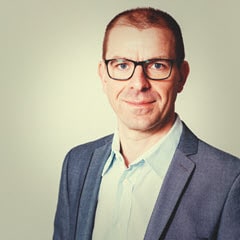
Volker Buzek is an IT-Architect at j&s-soft GmbH with a focus on web-based and mobile architectures. He is also an SAP Mentor and the inventor of wdi5.
- Twitter: https://twitter.com/vobu
- LinkedIn: https://www.linkedin.com/in/volkerbuzek/
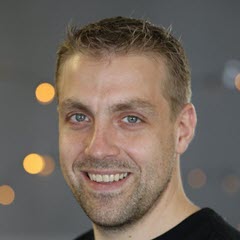
Peter Muessig has worked for SAP since 2005 and is an initial member of the Phoenix Project. Today, he is the Chief Development Architect for UI5 and focuses on its evolution. In his spare time, he is an active member of the UI5 open source community.
- Twitter: https://twitter.com/pmuessig
- LinkedIn: https://www.linkedin.com/in/peter-muessig-7b40576/
Show Notes:
- Blog post by Volker Buzek
- wdi5: https://github.com/ui5-community/wdi5
- wdi5 documentation: https://ui5-community.github.io/wdi5
- UI5 community: https://github.com/ui5-community
- https://www.js-soft.com/
- https://openui5.org/ui5con/germany2022/
- https://openui5.org
- https://sdk.openui5.org/
- SAP Open Source Program Office
- Additional Downloads:
Hosted by Karsten Hohage – Product Expert in Technology and Innovation (T&I)

LinkedIn: https://www.linkedin.com/in/karsten-hohage-0180312/
The post wdi5 – UI5’s Open-Source End-to-End Testing Framework first appeared on The Open Source Way.
Open Source at VMware – Key Driver of Innovation
In this episode, our host Karsten Hohage talks with our guest Dr. Dawn Foster, PhD. from VMware about VMware’s open source strategy, and the importance of community and project health. Dawn explains project health metrics, how they contribute to improving projects, and how well-documented processes and governance help scale communities and keep them healthy. We also learn about Dawn’s impressive experience in the IT industry as she takes us through the various stages of her professional and academic career.
Guest:
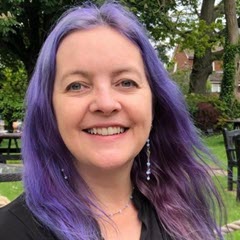
Dr. Dawn Foster, PhD. has been working in open source for more than 20 years at companies like Intel and Puppet. At VMware, she leads the community strategy efforts within the Open Source Program Office. She is a Governing Board member and maintainer for the CHAOSS metrics project, a Steering Committee member for the TODO Group, and co-chair of the CNCF Contributor Strategy Technical Advisory Group. She is also on the board of OpenUK.
- Twitter: Dr. Dawn Foster (@geekygirldawn) / Twitter
- LinkedIn: https://www.linkedin.com/in/dawnfoster
- Dawn’s website: http://fastwonderblog.com/
Show Notes:
- Links
- SAP Open Source Program Office
- Additional Downloads:
Hosted by Karsten Hohage – Product Expert in Technology and Innovation (T&I)

LinkedIn: https://www.linkedin.com/in/karsten-hohage-0180312/
The post Open Source at VMware – Key Driver of Innovation first appeared on The Open Source Way.
Open Source at Microsoft – ClearlyDefined and Open-Source Supply Chain Security
In this episode, our host Karsten Hohage talks to Nell Shamrell-Harrington from Microsoft and Sebastian Wolf from SAP about ClearlyDefined, a central data store for all open-source licenses across many different open-source ecosystems, and open source supply chain security at Microsoft. Nell explains both projects, talks about Microsoft’s open source history and evolution, and we also learn about the differences and similarities between Microsoft and SAP’s open source engagement from Sebastian.
Guest:
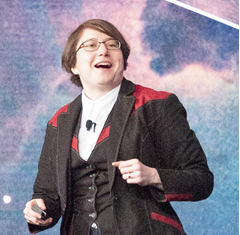
Nell Shamrell-Harrington is a principal software engineer at Microsoft in the Azure Office of the CTO, and former lead engineer for ClearlyDefined. She is also on the board of directors of the RUST foundation.
- Twitter: https://twitter.com/nellshamrell?ref_src=twsrc%5Egoogle%7Ctwcamp%5Eserp%7Ctwgr%5Eauthor
- LinkedIn: https://www.linkedin.com/in/nellshamrell/
- Nell’s website: http://www.nellshamrell.com
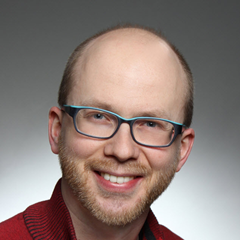
Sebastian Wolf is a development architect and has been working for the SAP Open Source Program Office (OSPO) since the beginning of 2020. He first joined SAP back in 2003 as a student and has since worked in several development positions – for example at SAP SRM, ABAP Development Tools, the SAP Community Network, and Central Architecture.
- GitHub: https://github.com/Wunderfitz
- Twitter: https://twitter.com/Ygriega
Show Notes:
- Links
- SAP Open Source Program Office
- Additional Downloads:
Hosted by Karsten Hohage – Product Expert in Technology and Innovation (T&I)

LinkedIn: https://www.linkedin.com/in/karsten-hohage-0180312/
The post Open Source at Microsoft – ClearlyDefined and Open-Source Supply Chain Security first appeared on The Open Source Way.
Gaia-X, Catena-X, International Data Spaces – Three Initiatives, One Goal
How these open-source initiatives contribute to securely processing, sharing, and managing data across organizations
In this episode, our host Karsten Hohage talks with Nemrude “Rudi” Verzano, head of Industry 4.0 and Digital Supply Chain Innovation at SAP, about the open-source initiatives in Gaia-X, Catena-X, and International Data Spaces that represent some of the cooperation efforts between the Fraunhofer Institute and some of SAP’s large customers. Rudi explains the initiatives’ goals, how they came to be, and what benefits they offer. We also learn why joining forces with others can sometimes lead to the best results.
Guest:
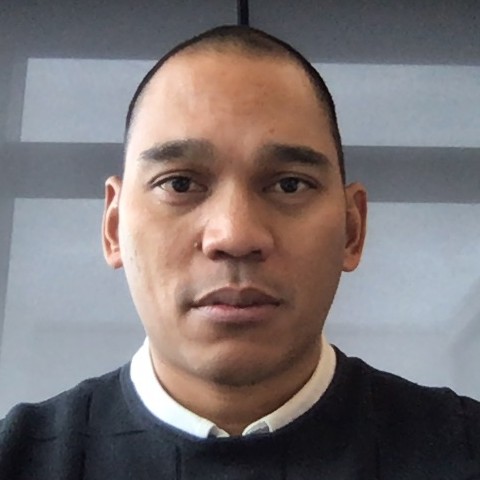
Nemrude “Rudi” Verzano is head of Industry 4.0 and Digital Supply Chain Innovation at SAP. Before that, he was a consultant at SAP and a freelance consultant focusing on integration and interoperability challenges in different industries.
LinkedIn:
https://www.linkedin.com/in/nemrude-verzano-489a3717a/
Show Notes:
- Links
- SAP Open Source Program Office
- Additional Downloads:
Hosted by Karsten Hohage – Product Expert in Technology and Innovation (T&I)

LinkedIn: https://www.linkedin.com/in/karsten-hohage-0180312/
The post Gaia-X, Catena-X, International Data Spaces – Three Initiatives, One Goal first appeared on The Open Source Way.
Mercedes-Benz FOSS – Open Source in the Automotive Industry
In this episode, our host Karsten Hohage talks with our guests Wolfgang Gehring and Christian Wege about FOSS at Mercedes-Benz Group AG. Wolfgang and Christian explain how and why Mercedes-Benz enables their employees to become and stay active in open source, which open-source projects they are working on, and how they contribute to the open-source world outside of Mercedes-Benz. We also learn why a so-called driver’s license is essential for working on open-source projects as a Mercedes-Benz employee.
Guests:
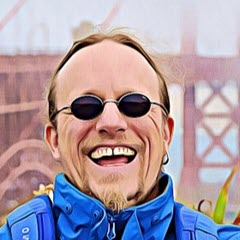
Inspired by the InnerSource movement more than five years ago, Dr. Wolfgang Gehring turned into an ambassador for InnerSource and open source and has been spreading the idea within Mercedes-Benz and its IT-subsidiary Daimler TSS. A software engineer by trade, Wolfgang’s goal is to enable Mercedes-Benz to accelerate their open-source activities.

Dr. Christian Wege has a background in informatics, leading the IT team of the Mercedes-Benz FOSS Center of Competence. Before this, he worked on FOSS topics at Mercedes-Benz Group AG for more than ten years and has been one of the initiators to propose FOSS as a strategic initiative. He strives to make the voice of the developer heard in the creation of the FOSS governance processes and to establish FOSS within Mercedes-Benz.
Show Notes:
- Links
- SAP Open Source Program Office
- Additional Downloads:
Hosted by Karsten Hohage – Product Expert in Technology and Innovation (T&I)

LinkedIn: https://www.linkedin.com/in/karsten-hohage-0180312/
The post Mercedes-Benz FOSS – Open Source in the Automotive Industry first appeared on The Open Source Way.
Eclipse Dirigible – An Open-Source Platform for End-To-End Rapid Development of Business Applications
In this episode, our host Karsten Hohage talks with Yordan Pavlov and Dragomir Anachkov about the open-source projects Eclipse Dirigible, an application platform, and XSK, an environment compatible with SAP HANA Extended Application Services (XS). Yordan and Dragomir explain the projects, how they relate to each other, why they were open-sourced, and the benefits they offer. We also learn how they differ from similar projects out there and how to best contribute to them.
Guests:
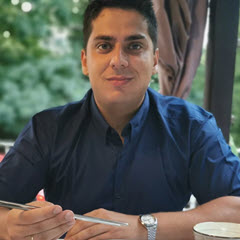
Yordan Pavlov is project lead of Eclipse Dirigible and solution architect for the project XSK, both open-source projects. He is also one of the major contributors to the two GitHub repositories. Yordan joined SAP in 2013 and was part of the core teams working on what is now known as SAP BTP. Recently, he switched his focus mostly toward helping SAP customers and partners to migrate and develop their solutions to SAP BTP.
SAP Community: https://people.sap.com/yordan.pavlov
LinkedIn: https://www.linkedin.com/in/jordan-pavlov/
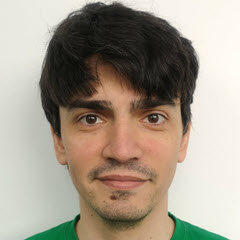
Dragomir Anachkov has been a User Assistance Developer at SAP since 2016. Apart from writing documentation, he is also an avid video creator. He has been working on the Eclipse Dirigible project for the past four years by contributing to its documentation and YouTube channel.
SAP Community: https://people.sap.com/dragomir.anachkov
LinkedIn: https://www.linkedin.com/in/dragomir-anachkov-b45b098b/
Show Notes:
- Links
- Eclipse Dirigible official website: dirigible.io
- Eclipse Dirigible repository at GitHub: https://github.com/eclipse/dirigible/
- Eclipse Dirigible YouTube channel: https://www.youtube.com/c/DirigibleIo/videos
- Eclipse Dirigible Microlearning openSAP channel: https://microlearning.opensap.com/channel/Dirigible/207614233
- Twitter: https://twitter.com/dirigible_io
- Project “XSK” official website: https://www.xsk.io/
- SAP Open Source Program Office
- Additional Downloads:
Hosted by Karsten Hohage – Product Expert in Technology and Innovation (T&I)

LinkedIn: https://www.linkedin.com/in/karsten-hohage-0180312/
The post Eclipse Dirigible – An Open-Source Platform for End-To-End Rapid Development of Business Applications first appeared on The Open Source Way.
SapMachine – The OpenJDK for All Things SAP
In this episode, our host Karsten Hohage talks with our guests Christoph Langer and Thomas Stüfe about SapMachine, an SAP-distributed version of OpenJDK. Christoph and Thomas explain what SapMachine is, how it came to be and evolved, and why SAP contributes to the OpenJDK. We also learn about the difference between SapMachine, OpenJDK, and SAP JVM, and how to best get involved.
Guests:
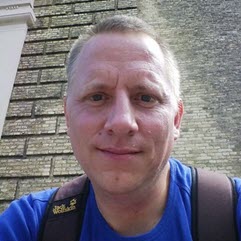
Thomas joined SAP in 2000. He spent a lot of his career writing and optimizing low-level C/C++ software and porting it to strange architectures. Having joined the JVM team in 2004, he worked on the VM Container, the SAP JVM, and the SapMachine. He is passionate about JVM technology and the OpenJDK project, and a significant contributor to the latter.
Homepage: https://stuefe.de
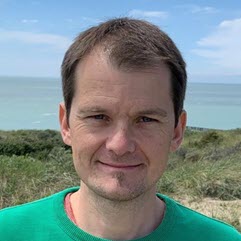
Christoph is an SAP Development Manager heading the SapMachine team. He is also a committer and reviewer in the OpenJDK project, and a maintainer of JDK Update releases. He started his professional career with porting SAP solutions to IBM platforms and got in touch with several Java Virtual Machines during this time. Later, he joined the SAP JVM team as a support engineer and from there developed into an allrounder in the JDK space.
Twitter: https://twitter.com/therealclanger
Show Notes:
- Links
- OpenJDK: http://openjdk.java.net/
- SapMachine: https://sapmachine.io
- Features contributed to the OpenJDK by SAP: https://github.com/SAP/SapMachine/wiki/Features-Contributed-by-SAP
- SAP JVM: https://help.sap.com/viewer/a0f332f9d5dd495a9543d620e9b084d2/LATEST/en-US/47dc90b4ef17452289f9128b8c2bbd77.html
- SAP Open Source Program Office
- Additional Downloads:
Hosted by Karsten Hohage – Product Expert in Technology and Innovation (T&I)

LinkedIn: https://www.linkedin.com/in/karsten-hohage-0180312/
The post SapMachine – The OpenJDK for All Things SAP first appeared on The Open Source Way.
The Open Documentation Initiative – The Gold Standard of Collaborative Documentation
In this episode, Karsten Hohage talks with our guests DJ Adams and Jens Haley about the Open Documentation Initiative, an initiative to make the documentation of SAP Business Technology Platform content collaborative and interactive. DJ and Jens explain the project’s current status, where it’s heading, and what makes it so unique. We also learn how to get involved and what the different types of collaboration are.
Guests:
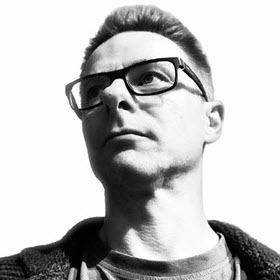
Jens Haley:
Jens is a User Assistance Development Architect at SAP and has been with SAP for more than 20 years. After having worked as an author, he was later responsible for coordinating the delivery of bigger documentation projects. He is the workstream lead for the technical implementation of the Open Documentation Initiative.
LinkedIn: https://www.linkedin.com/in/jens-haley-34889942/
DJ Adams:
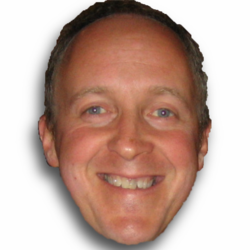
DJ is a Developer Advocate at SAP and has been working in the SAP technical ecosphere since 1987. He studied Ancient Greek, Latin and Philology at University and has written books for O’Reilly and SAP Press. He is the community lead for the Open Documentation Initiative.
Website: https://qmacro.org
Show Notes:
- Links
- SAP Open Source Program Office
- Additional Downloads:
Hosted by Karsten Hohage – Product Expert in Technology and Innovation (T&I)

LinkedIn: https://www.linkedin.com/in/karsten-hohage-0180312/
The post The Open Documentation Initiative – The Gold Standard of Collaborative Documentation first appeared on The Open Source Way.
Compiler History – The Open Source in Your Favorite 1990s First-Person Shooter
In this episode, our host Karsten Hohage talks with our guests Jack Schueler and Sebastian Wolf about Watcom, a spinoff of the University of Waterloo from the 1980s. Jack, who is one of the founding employees of Watcom, talks about how the Watcom C/C++ project came to be, how it evolved over time, how it was open sourced in 2002, and what it is today. He also shares his personal journey and how he ultimately came to work at SAP. Along the way, we learn a lot about programming over the past five decades and how Watcom played an essential part in the development of Doom and Quake.
Guests:
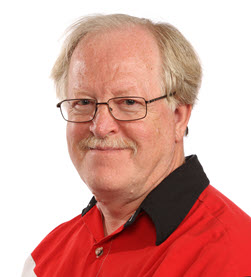
Jack Schueler
Jack has been a software developer since the 1970s. By virtue of successive acquisitions, he is now a senior software developer at SAP. Over the span of more than 40 years, Jack has been involved in the development of computer language compilers and interpreters, as well as SQL database software and related client tools and documentation. His current job is to support customers by investigating and resolving the tough issues and continually improving SAP software and documentation.
LinkedIn: https://www.linkedin.com/in/jack-schueler/
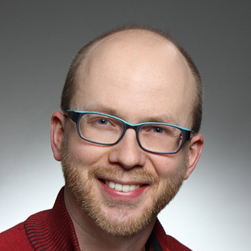
Sebastian Wolf
Sebastian is a development architect and has been working for the SAP Open Source Program Office (OSPO) since the beginning of 2020. He first joined SAP back in 2003 as a student and has since worked in several development positions – for example at SAP SRM, ABAP Development Tools, the SAP Community Network, and Central Architecture.
GitHub: https://github.com/Wunderfitz
Twitter: https://twitter.com/Ygriega
Show Notes:
- Links
- SAP Open Source Program Office
- Additional Downloads:
Hosted by Karsten Hohage – Product Expert in Technology and Innovation (T&I)

LinkedIn: https://www.linkedin.com/in/karsten-hohage-0180312/
The post Compiler History – The Open Source in Your Favorite 1990s First-Person Shooter first appeared on The Open Source Way.
Fundamental Library – An Open Source Library for Everyone
In this episode Karsten Hohage talks with our guests Mladen Droshev and Fabian Tempel about the Fundamental Library, an open-source library created to help application developers align the user experience based on any web application framework with the SAP Fiori Design. Mladen and Fabian talk about their own Fundamental Library journey, explain the benefits of using it, and how to best get started.
Guests:
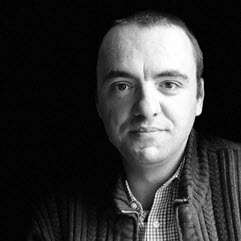
Mladen is the architect and product owner of Fundamental Library. He was part of UI5 for one year and then later joined Hybris, where they had free beer at the office. After the acquisition, he stayed at SAP Canada (even though they canceled the free beer!). People call him Deno.
LinkedIn: https://www.linkedin.com/in/droshev/
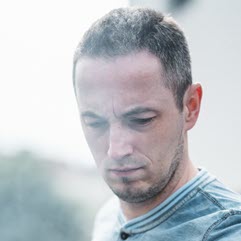
Fabian Tempel is a senior frontend developer who focuses on HTML and CSS. He is also a web accessibility expert in the Cloud Integration Accelerators team and is known as a “CSS Guru” within SAP. He joined Fundamentals as a contributor.
LinkedIn: https://www.linkedin.com/in/fabian-tempel/
Show Notes:
- Links
- SAP Open Source Program Office
- Additional Downloads:
Hosted by Karsten Hohage – Product Expert in Technology and Innovation (T&I)

LinkedIn: https://www.linkedin.com/in/karsten-hohage-0180312/
The post Fundamental Library – An Open Source Library for Everyone first appeared on The Open Source Way.
Rust – A Language on the Rise
In this episode Karsten Hohage talks with our guests André Borrmann and Philipp Degler about Rust, a programming language that was open-sourced from the start. Philipp and André talk about Rust’s evolution, explain its growing popularity within the community, and explore the possibilities it offers. We also learn why a strict compiler is better than a friendly one and why working with Rust can sometimes feel like raising a child.
Guests:
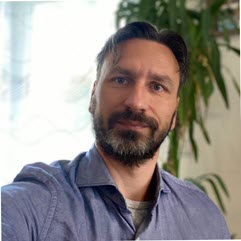
André celebrated his 10th anniversary at SAP last year. He started as an SAP Solution Manager consultant and ABAP developer and is now part of the Strategic Development Projects team as Full Stack Development Expert. He supports and drives strategic implementation projects and explores new technologies.
Last year he started the SAP internal knowledge transfer series “Rust – What the Crab?” to spread the knowledge about Rust within SAP.
LinkedIn: https://www.linkedin.com/in/andr%C3%A9-borrmann-21434212/
Xing: https://www.xing.com/profile/Andre_Borrmann
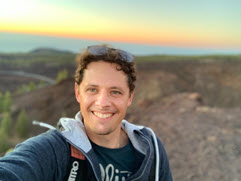
Philipp is a professional C/C++ developer at day and a passionate Rust developer at night. He joined SAP in 1999. Since then he has worked in different areas, from high level ABAP application development to low level systems development. Currently, he works as a development expert in the ABAP language group. Together with André he runs the Rust@SAP community.
XING: https://www.xing.com/profile/Philipp_Degler
Show Notes:
- Links
- SAP Open Source Program Office
- Additional Downloads:
Hosted by Karsten Hohage – Product Expert in Technology and Innovation (T&I)

LinkedIn: https://www.linkedin.com/in/karsten-hohage-0180312/
The post Rust – A Language on the Rise first appeared on The Open Source Way.
SAP Cloud SDK – Why Open Source is the Way to Go
In this episode Karsten Hohage talks with our guests Marika Marszalkowski and Frank Essenberger about the SAP Cloud SDK, an NPM library which helps develop web applications on SAP’s Business Technology Platform. We learn about the evolution and benefits of the SDK, the differences and similarities of its Java and JavaScript flavors, SAP’s decision to run it as an open source project, and the challenges and benefits associated with all this. Marika and Frank also explain how to best get started with the SDK on GitHub.
Guests:
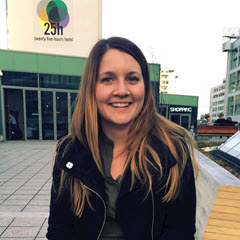
Marika Marszalkowski is a senior developer and takes care of the SAP Cloud SDK for JavaScript and TypeScript. She joined the SAP Innovation Center Potsdam in 2014 as a developer, where she initially focused on frontend development and was later responsible for leading the SDK’s transition from closed source to open source. Marika holds a master’s degree in IT Systems Engineering.
LinkedIn: https://www.linkedin.com/in/marika-marszalkowski-8a1322172/
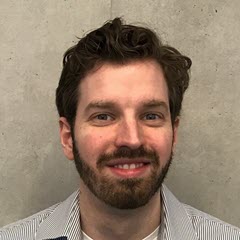
Frank Essenberger is a senior developer in the SAP Cloud SDK team in Potsdam. He holds a Ph.D. in Physics and joined SAP in 2017. After having worked on different cloud applications like SAP RealSpend, he now works on the Cloud SDK.
LinkedIn: https://www.linkedin.com/in/frank-essenberger-0023351b8/
Show Notes:
- Links
- SAP Open Source Program Office
- Additional Downloads:
Hosted by Karsten Hohage – Product Expert in Technology and Innovation (T&I)

LinkedIn: https://www.linkedin.com/in/karsten-hohage-0180312/
The post SAP Cloud SDK – Why Open Source is the Way to Go first appeared on The Open Source Way.
License Compliance – From risks to developer friendly processes
In this episode Karsten Hohage talks with Dobrinka Mladenova and Janaka Bohr about how the license compliance processes for open source at SAP evolved over the past 20 years. By, for example, implementing automation, tools, and standardization, SAP now has a developer-friendly approach and at the same time addresses crucial customer concerns. Dobrinka and Janaka speak about OpenChain, the international standard for open source compliance, and discuss SAP’s involvement in ClearlyDefined. We will also find out why it sometimes takes a postcard or a beer to be license compliant.
Guests:
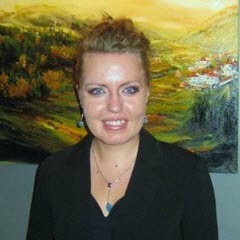
Dobrinka Mladenova has been part of the SAP family since 2010. She specializes on licensing and legal matters. Currently, she is a senior licensing specialist in the Global Licensing department based in Walldorf, Germany. Dobrinka focuses on open source license compliance and risk mitigation. She is primarily responsible for SAP M&A (merger and acquisition) licensing due diligence and leads the end-to-end processes from pre-acquisition to full post-merger integration into SAP standards. Dobrinka holds a Master of Law degree
LinkedIn: https://www.linkedin.com/in/dobrinka-mladenova-16a39236/
Janaka Bohr joined SAP in 2001 as strategic technology partner manager. He managed various key technology partnerships for SAP and established the company’s open source governance process together with the legal department of SAP. Today, Janaka is Head of the Licensing Compliance team within SAP Global Licensing. Among other topics he manages all aspects around open source governance at SAP and is responsible for the strategic direction in this area.
Show Notes:
- Links
- SAP Open Source Program Office
- Additional Downloads:
Hosted by Karsten Hohage – Product Expert in Technology and Innovation (T&I)

LinkedIn: https://www.linkedin.com/in/karsten-hohage-0180312/
The post License Compliance – From risks to developer friendly processes first appeared on The Open Source Way.
ZEISS and SAP – An Open Source Talk
In this episode Karsten Hohage talks with our guests Holger Streidl, Corporate Open Source Officer at Carl Zeiss AG and Peter Giese, Director of the SAP Open Source Program Office. They address many of the questions that arise for an enterprise when establishing an OSPO and talk about the commonalities or differences of the OSPOs and their approaches at ZEISS and SAP – for example, when creating policies, building a legal framework, ensuring license compliance, or setting up training and education for the internal community.
Guests:
Holger Streidl
Corporate Open Source Officer, Carl Zeiss AG
Holger joined ZEISS in 2019 to work at the Digital Innovation Partners as consultant, trainer, and advocate for the utilization of open source and its underlying principles. He is responsible to evolve the open source strategy of the ZEISS group. His background is computer science. Before 2019, he worked in the area of health IT in the corporate world and in academia for nearly two decades. His first rendezvous with open source was in 2010 when he founded Medfloss.org, a repository indexing about 400 FOSS projects in the area of health care.
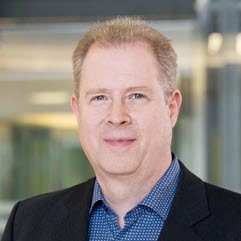
Peter Giese
Director of the SAP Open Source Program Office
Peter focuses on refining SAP’s open source strategy, developing new tools and approaches for managing open source at scale and on further promoting InnerSource at SAP. Since joining SAP in 1996, Peter has held several managerial and executive positions in application and technology development. Before joining SAP, Peter worked as a researcher at Fraunhofer Institute for Experimental Software Engineering (IESE) and as a development manager at Kiefer & Veittinger Software Unternehmensberatung GmbH. Peter holds an M.Sc. degree in computer science from Kaiserslautern University of Technology.
Show Notes:
- Links
- ZEISS: https://www.zeiss.com/corporate/int/about-zeiss.html
- ZEISS Digital Innovation Partners: https://www.zeiss.com/corporate/int/innovation-and-technology/digital-innovation-partners.html
- CLA Assistant: https://github.com/cla-assistant/cla-assistant
- Fosstars: https://github.com/SAP/fosstars-rating-core
- Project “Gardener”: https://github.com/gardener/gardener
- Open Source Linux Foundation: https://events.linuxfoundation.org/open-source-summit-europe/
- TODO Group: https://todogroup.org/
- OpenChain Project: https://www.openchainproject.org/
- OpenChain Reference Tooling Group: https://www.openchainproject.org/news/2020/03/15/openchain-reference-tooling-work-group-in-2020
- OSPOCon: https://events.linuxfoundation.org/ospocon/
- EU’s Open Source Impact Study: https://openforumeurope.org/open-source-impact-study/
- Open Source Tooling for Open Source Compliance: https://github.com/Open-Source-Compliance/Sharing-creates-value
- SAP Open Source Program Office
- Additional Downloads:
Hosted by Karsten Hohage – Product Expert in Technology and Innovation (T&I)

LinkedIn: https://www.linkedin.com/in/karsten-hohage-0180312/
The post ZEISS and SAP – An Open Source Talk first appeared on The Open Source Way.
Fosstars – A Rating Approach to Open Source Components
In this episode Karsten Hohage talks with our guests Michael Bernhardt and Artem Smotrakov about Fosstars, a java-based framework that allows you to define various ratings for open source projects. The name “Fosstars” is a combination of “FOSS” for “Free and Open Source Software” and the concept of rating products or services with “stars”. It helps software engineers and architects to quickly assess various aspects of open source components, such as their security, maturity, etc. It is often difficult to analyze the actual code of all the open source components in an application and compare them with respect to various aspects. To make it easier, Fosstars offers ratings that are based on publicly available information about the projects, such as adopted security tools and best practices, activity of the community, and many more. Thus, Fosstars is a project, that deals with other open source projects, making the natural approach to it – guess what – open source!
Guests:
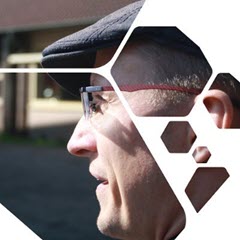
Michael Bernhardt works as a program manager for SAP’s Open Source Security Strategy and DevSecOps lead in SAP’s corporate security organization. He also acts as a security advisor as part of the SAP Open Source Program Office (OSPO).
Xing: https://www.xing.com/profile/Michael_Bernhardt6
Twitter: https://twitter.com/SecOctoBear

Artem Smotrakov is a security engineer with experience in development, quality engineering, and open source.
LinkedIn: https://www.linkedin.com/in/artem-smotrakov/
Twitter: https://twitter.com/artem_smotrakov
https://blog.gypsyengineer.com/en/
Show Notes:
- Links
- https://github.com/SAP/fosstars-rating-core
- Blog post by Artem Smotrakov
- Blog post by Michael Bolz
- SAP Open Source Program Office
- Additional Downloads:
Hosted by Karsten Hohage – Product Expert in Technology and Innovation (T&I)

LinkedIn: https://www.linkedin.com/in/karsten-hohage-0180312/
The post Fosstars – A Rating Approach to Open Source Components first appeared on The Open Source Way.
Clean ABAP – Best Practices for Effective ABAP Code, Straight from the Expert
In this episode Karsten Hohage talks with our guests Klaus Häuptle and Florian Hoffmann about the importance of having a readable and maintainable codebase to ensure sustainable development. Klaus and Florian started an internal repository with best practices for maintainable and readable ABAP code. Through info sessions with many hundreds of participants, intense discussions, and great contributions, SAP colleagues helped turn this into a treasure trove for modern ABAP’ers. Many developers asked if this would become available as a book, and if they would be allowed to share it with customers and partners. They soon realized that this initiative gained its early drive from its community and needed to remain part of that community. Thus, they opened it to contributions from inside and outside of SAP, hoping that this repository would help developers worldwide to make their ABAP code a little cleaner. In late 2020, they published the book “Clean ABAP” to help individual developers, teams, and entire organizations with learning and implementing clean ABAP.
Guests:
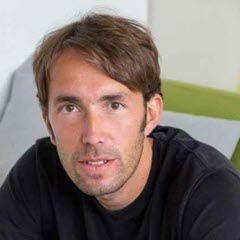
Klaus Häuptle is a software engineer who worked on different products and technologies in the areas of governance, risk, and compliance and supply chain management. During his career he has also been a trainer, coach, and product owner for agile software engineering. Currently, he mainly drives craftsmanship topics across SAP and is a curator for a large internal community with the intention to improve engineering topics by strengthening collaboration.
LinkedIn: https://www.linkedin.com/in/klaus-h%C3%A4uptle-951a0349/?originalSubdomain=de
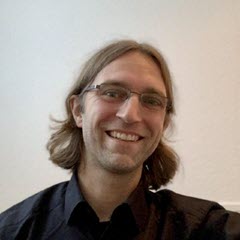
Florian Hoffmann is a team architect and agile driver for SAP Business Integrity Screening, SAP Watch List Screening, and the SAP governance, risk, and compliance solutions, especially the microservice automated procedure. He is also a co-founder of ABAP Clean Code.
Show Notes:
- Links
- Clean ABAP guide : https://github.com/SAP/styleguides/blob/master/clean-abap/CleanABAP.md
- Clean ABAP book: https://www.sap-press.com/clean-abap_5190/
- Clean Code Developer Initiative: https://clean-code-developer.com/
- code pal for ABAP: https://github.com/SAP/code-pal-for-abap/blob/master/README.md
- abap2xlsx: https://github.com/sapmentors/abap2xlsx/blob/master/README.md
- abapGit: https://github.com/abapGit/abapGit/blob/master/README.md
- abaplint: https://github.com/abaplint/abaplint/blob/master/README.md or https://abaplint.org/
- SAP Open Source Program Office
- Additional Downloads:
Hosted by Karsten Hohage – Product Expert in Technology and Innovation (T&I)

LinkedIn: https://www.linkedin.com/in/karsten-hohage-0180312/
The post Clean ABAP – Best Practices for Effective ABAP Code, Straight from the Expert first appeared on The Open Source Way.
OpenUI5 – A One-Stop-Shop UI Toolkit
In this episode Karsten Hohage talks with our guests Andreas Kunz and Peter Muessig about OpenUI5. OpenUI5 is a JavaScript-based web user interface framework. One that specifically targets enterprise use cases, but can be used for any type of application. Andreas and Peter explain how OpenUI5, SAPUI5, and SAP Fiori are related and how OpenUI5 became an open source project. They elaborate why the modular structure of this probably largest open source project from SAP is an optimal fit for a community approach. Our guests also have some interesting examples how OpenUI5 has been used not only by SAP customers, but also by nuclear scientists as well as completely private individuals building an app for their kids. Overall, OpenUI5 engages a large community of contributors and followers, manifest in five-digit enrollment in online courses and very popular community events.
Guests:

Andreas Kunz works at SAP since 2005 and has been with UI5 from the very beginning in various roles, now as a lead architect. He is always eager to engage with the outside community and an advocate for openness and open source.
LinkedIn: https://www.linkedin.com/in/andreas-kunz-dev/
Twitter: https://twitter.com/aku_dev
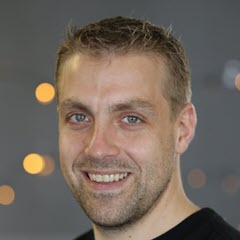
Peter Muessig works at SAP since 2005 and is an initial member of the Phoenix project (a.k.a. UI5/OpenUI5/SAPUI5), who has grown into the role of a chief development architect for UI5. He mainly focuses on the evolution of the framework, the controls, and the tooling.
LinkedIn: https://www.linkedin.com/in/peter-muessig-7b40576/
Twitter: https://twitter.com/pmuessig
Show Notes:
- Links
- SAP Open Source Program Office
- Additional Downloads:
Hosted by Karsten Hohage – Product Expert in Technology and Innovation (T&I)

LinkedIn: https://www.linkedin.com/in/karsten-hohage-0180312/
The post OpenUI5 – A One-Stop-Shop UI Toolkit first appeared on The Open Source Way.
Project "Kyma" – An Easy Way to Extend Enterprise Applications
In this episode Karsten Hohage talks with our guests Krasimir Semerdzhiev and Valentin Vieriu about project „Kyma”. Kyma is an open source project built on top of Kubernetes that provides a platform to build extensions for cloud applications. Krasimir and Valentin talk about all the investigations, challenges, and learnings that come with such a project. We learn how and why Kyma got started, where the strange name comes from, and why it is an advantage for contributors that Kyma is based on Kubernetes. The episode also touches how Kyma scales, how it relates to other open source projects inside and outside the Cloud Native Computing Foundation (CNCF) and how you can get involved.
Guests:
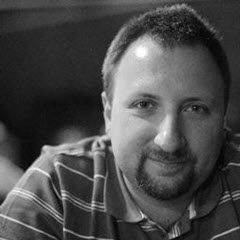
Krasimir Semerdzhiev is a true open source enthusiast. He works as a chief architect in the SAP CTO Office where he leads a Northstar Architecture workstream, defining the end-to-end experience for implementation partners and Independent Software Vendors (ISVs), who extend and customize SAP products. Having spent the last 20 years in technology development in various roles, he is a prominent evangelist for the adoption of cloud native architecture principles both internally and outside of SAP.
LinkedIn: https://www.linkedin.com/in/krasimir-semerdzhiev-84044a/
Twitter: https://twitter.com/evilyeti

Valentin Vieriu works as a community manager of project „Kyma“. He has been tinkering with the Web for more than 15 years. During this time, he gathered a 360° understanding of how the Web works – from product management via UX, design, and front end, all the way to back end and DevOps. A passionate front end developer at heart, his new goal is to make sure machine learning becomes an easy to use concept for every problem to solve. Whenever you do not find him building web apps or training neural networks, he’s probably strengthening his knowledge about Kubernetes and cloud native application patterns.
LinkedIn: https://www.linkedin.com/in/valentinvieriu/
Twitter: https://twitter.com/valentinvieriu
Show Notes:
- Links
- Website: https://kyma-project.io/
- GitHub: https://github.com/kyma-project
- Twitter: https://twitter.com/kymaproject
- openSAP: https://open.sap.com/courses/kyma1
- SAP Open Source Program Office
- Additional Downloads:
Hosted by Karsten Hohage – Product Expert in Technology and Innovation (T&I)

LinkedIn: https://www.linkedin.com/in/karsten-hohage-0180312/
The post Project “Kyma” – An Easy Way to Extend Enterprise Applications first appeared on The Open Source Way.
Project "Gardener" – Managing Kubernetes at Scale
In this episode Karsten Hohage talks with our guests Vasu Chandrasekhara and Tim Usner about project Gardener. Today, Kubernetes is the natural choice for running software in the cloud. More and more developers and corporations are in the process of containerizing their applications, and many of them are adopting Kubernetes for automated deployments of their cloud native workloads. There are many open source tools which help creating and updating single Kubernetes clusters. However, the more clusters you need and the more infrastructures need to be supported, the harder it becomes to operate, monitor, manage, and keep all of them up-to-date. And that is exactly what project Gardener focuses on.
Vasu and Tim explain in more detail what Gardener does, why open source is the natural approach to such a project, and how it makes the lives of cloud developers, architects, and operators easier.
Guests:
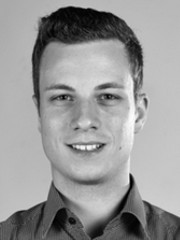
Tim Usner
Tim Usner joined SAP after studies in information technology. He started his career as a business software developer and later switched to the Gardener project in 2018. Besides his contributions to core components of Gardener, he has advocated the project at different events and supported development teams with their transition to Gardener and Kubernetes. He is passionate about working in the open source space where the project evolves every day, thanks to a growing and contributing community.
LinkedIn:
https://www.linkedin.com/in/timusner/
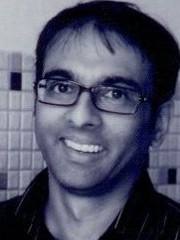
Vasu Chandrasekhara
Vasu Chandrasekhara studied physics and computer science and started his first job at SAP as a technology consultant. He went back into research in computer science at the European Media Lab. Both experiences set the ground for successfully creating several startups in the following years. He joined SAP again in 2015 as a chief architect in the Central Engineering Team working on cloud native subjects and projects. He initiated the Gardener project, helped to launch the Kyma project, and is otherwise an advocate for open source within the company.
LinkedIn:
https://www.linkedin.com/in/%F0%9F%91%A8%E2%80%8D%F0%9F%8C%BE-vasu-chandrasekhara-b570202/
Show Notes:
- Links
- Website: https://gardener.cloud/
- GitHub: https://github.com/gardener
- Slack: https://kubernetes.slack.com/archives/CB57N0BFG
- Twitter: https://twitter.com/GardenerProject
- SAP Open Source Program Office
- Additional Downloads:
Hosted by Karsten Hohage – Product Expert in Technology and Innovation (T&I)

LinkedIn: https://www.linkedin.com/in/karsten-hohage-0180312/
The post Project “Gardener” – Managing Kubernetes at Scale first appeared on The Open Source Way.
Outbound Process Made Easy – SAP’s Process and Tooling
In this episode Karsten Hohage talks with our guest Fabienne Haag about the Open Source Outbound Process at SAP and how it was implemented. During the last few years, SAP has been actively initiating and maintaining its own open source projects. Many SAP employees contribute to these projects or to completely different ones. This led to the need to have a simple and transparent process in place. The new Open Source Outbound Process enables developers to easily and quickly start new open source projects and contribute to existing projects – both in a compliant and secure manner. The entire approval workflow is executed in Enterprise GitHub, which is close to the developer community and gives them an easy way to manage their open source contribution requests.
Guest:
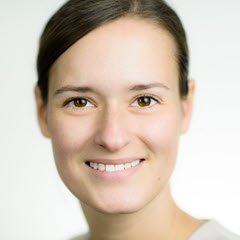
Fabienne Haag
Fabienne Haag works at SAP Global Licensing. She is responsible for compliance requirements of the usage of open source components in SAP products. In addition, she is deeply involved in the open source outbound process.
LinkedIn:
https://www.linkedin.com/in/fabienne-haag-597a01173/
Show Notes:
- Links
- GitHub: https://github.com/SAP
- SAP Open Source Program Office
- Additional Downloads:
Hosted by Karsten Hohage – Product Expert in Technology and Innovation (T&I)

LinkedIn: https://www.linkedin.com/in/karsten-hohage-0180312/
The post Outbound Process Made Easy – SAP’s Process and Tooling first appeared on The Open Source Way.
InnerSource Rocks
In this episode Karsten Hohage talks with our guest Michael Picht about InnerSource at SAP and why it should be the default development model at SAP. InnerSource is the practice of applying methodologies and best practices from open source projects to in-house software development. In an InnerSource approach, projects are open for contributions from other teams. This implies that they accept and build on these contributions – just as an open source project would. The major difference are the boundaries: the community is in-house, it only consists of colleagues, and the codebase cannot be accessed from outside of the company.
By applying InnerSource in an enterprise software development context, you can increase quality, speed, collaboration, and developer joy. Moreover, especially large development organizations can break silos between different teams and encourage developers to expand their skills or use them to support cross-team projects.
If you want to learn more about Open Source at SAP go to: https://developers.sap.com/open-source.html, follow us on Twitter: https://twitter.com/sapopensource and share your ideas with us: [email protected]
Guest:
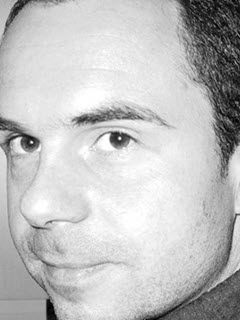
Michael Picht
Michael Picht works as a chief architect at SAP. Prior to this, he worked as a developer, software architect, project-, program and product manager within SAP application development with focus on supply chain management, business processes, and innovation topics. At the SAP Open Source Program Office his focus areas are processes, tooling, and InnerSource.
LinkedIn: https://www.linkedin.com/in/michael-picht-249b7a149
Show Notes:
- Links
- SAP Customer Experience: https://www.sap.com/products/crm.html?btp=1602cb35-9270-4588-91b6-972d73f1207b
- SAP Open Source Program Office
- Additional Downloads:
Hosted by Karsten Hohage – Product Expert in Technology and Innovation (T&I)

LinkedIn: https://www.linkedin.com/in/karsten-hohage-0180312/
The post InnerSource Rocks first appeared on The Open Source Way.
Corona-Warn-App: Behind the Scenes
SAP collaborated very closely with the German Government, Robert Koch Institute, Deutsche Telekom, and other partners to develop the Corona-Warn-App in an open source approach. The app warns the users if they have been in close proximity to someone diagnosed with COVID-19. This helps to trace chains of infection and provides guidance to people who have tested positive. The decentralized approach and pseudonymization ensure the highest level of security and data privacy. In this episode, our host Karsten Hohage talks to one of the community managers of the open source project, that was established to develop the Corona-Warn-App. If you want to learn more about The Corona-Warn-App go to: https://www.coronawarn.app/en/ or GitHub: https://github.com/corona-warn-app and share your ideas with us: [email protected]
Guest:
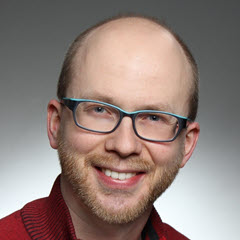
Sebastian Wolf
Sebastian is a development architect and works for the SAP OSPO since the beginning of 2020. He first joined SAP already back in 2003 as a student and has since worked in several development positions such as SAP SRM, ABAP Development Tools, the SAP Community Network and Central Architecture. He was engaged from the very beginning at the Corona-Warn-App project as a community manager.
GitHub: https://github.com/Wunderfitz
Twitter: https://twitter.com/Ygriega
Show Notes:
- Links
- Corona-Warn-App: https://www.coronawarn.app/de/
- GitHub: https://github.com/corona-warn-app
- SAP Open Source Program Office
- Additional Downloads:
Hosted by Karsten Hohage – Product Expert in Technology and Innovation (T&I)

Social Media
LinkedIn: https://www.linkedin.com/in/karsten-hohage-0180312/
The post Corona-Warn-App: Behind the Scenes first appeared on The Open Source Way.
Open Source at SAP
SAP is the 9th largest commercial contributor to open source projects. Mostly known for proprietary software, almost all of SAP’s solutions touch open source in one way or another. The Open Source Program Office, founded in April 2018, has the mission to nurture and support the open source approach to software development inside and outside of SAP.
Listen to our host Karsten Hohage and our guest Peter Giese why Open Source is important in a global enterprise, why it is a triple win for customers, developers and SAP, and why you need an Open Source Program Office. These and more questions will be answered in this episode.
If you want to learn more about Open Source at SAP go to: https://developers.sap.com/open-source.html and share your ideas with us: [email protected]
Guests:

Peter Giese
Director of the SAP Open Source Program Office
Peter focuses on refining SAP’s open source strategy, developing new tools and approaches for managing open source at scale and on further promoting InnerSource at SAP. Since joining SAP in 1996, Peter has held several managerial and executive positions in application and technology development. Before joining SAP, Peter worked as a researcher at Fraunhofer Institute for Experimental Software Engineering (IESE) and as a development manager at Kiefer & Veittinger Software Unternehmensberatung GmbH. Peter holds an M.Sc. degree in computer science from Kaiserslautern University of Technology.
Show Notes:
- Links
- Corona-Warn-App: https://www.coronawarn.app/de/
- Eclipse Foundation: https://www.eclipse.org/org/foundation/
- ToDo Group: https://todogroup.org/
- GitHub: https://github.com/SAP
- Gardener: https://gardener.cloud/
- Kyma: https://kyma-project.io/
- Open JDK: https://openjdk.java.net/
- Luigi: https://luigi-project.io/
- Fundamental Library: https://sap.github.io/fundamental/
- SAP Open Source Program Office
- Additional Downloads:
Hosted by Karsten Hohage – Product Expert in Technology and Innovation (T&I)

Social Media
LinkedIn: https://www.linkedin.com/in/karsten-hohage-0180312/
The post Open Source at SAP first appeared on The Open Source Way.
En liten tjänst av I'm With Friends. Finns även på engelska.